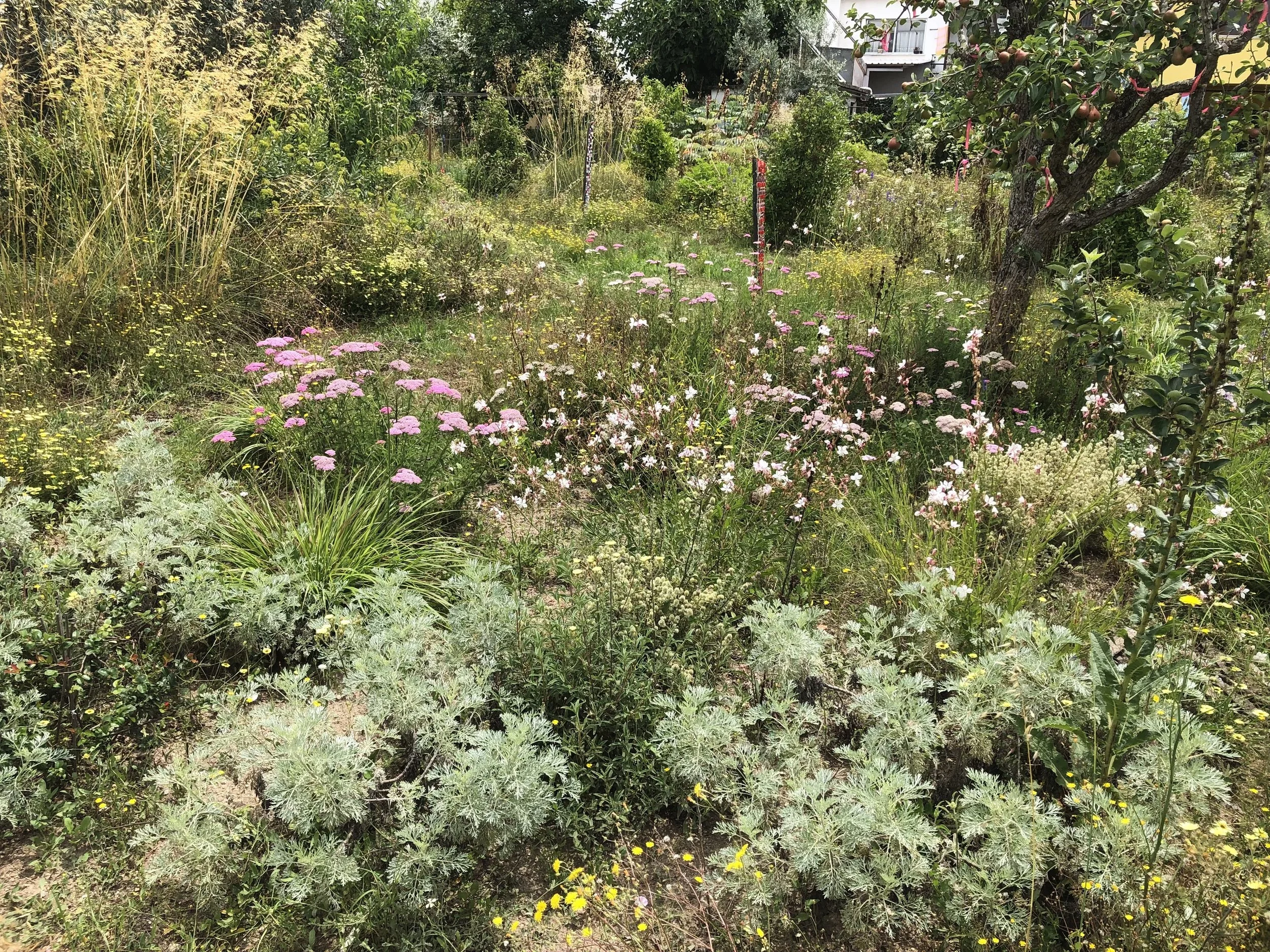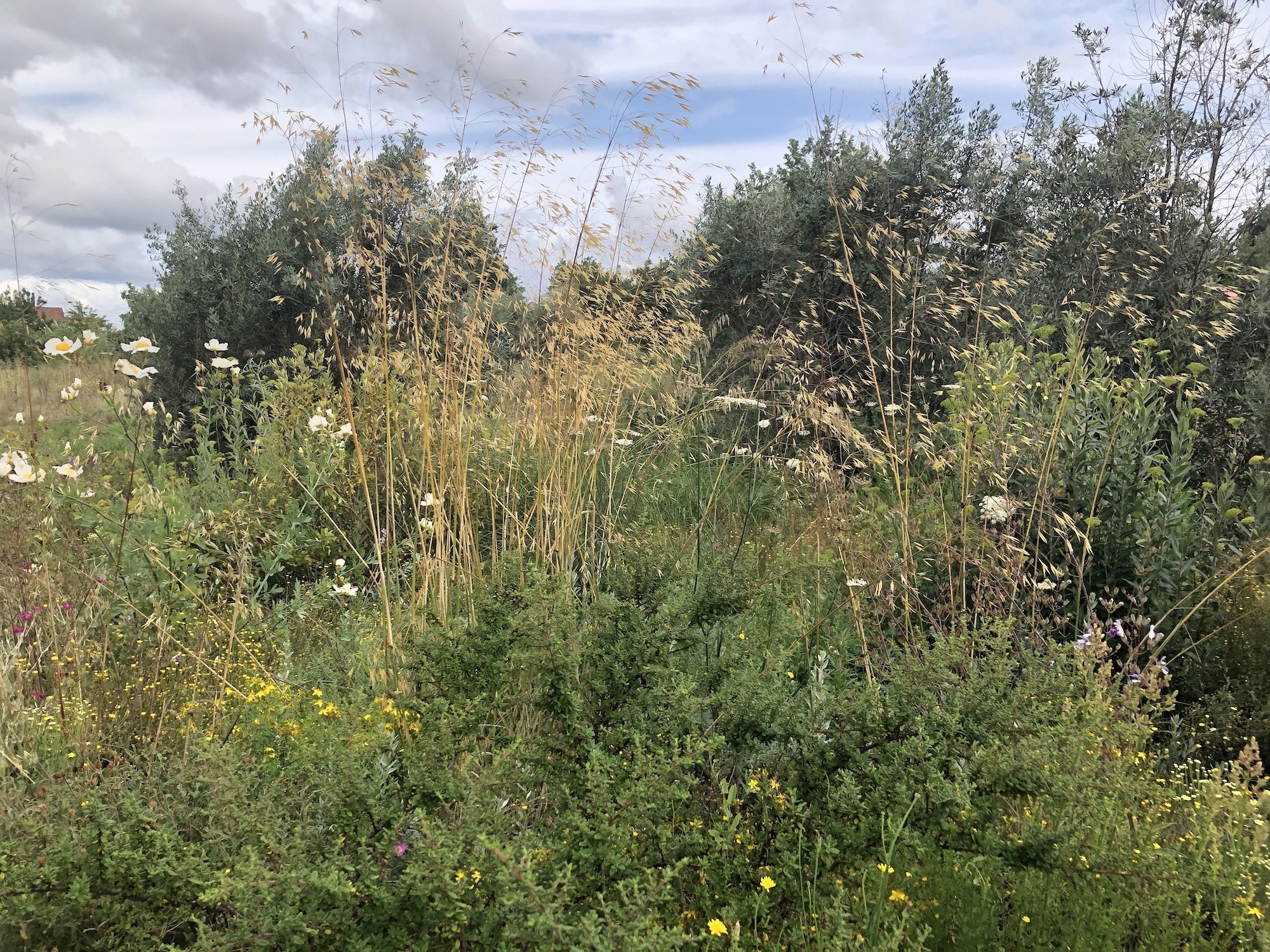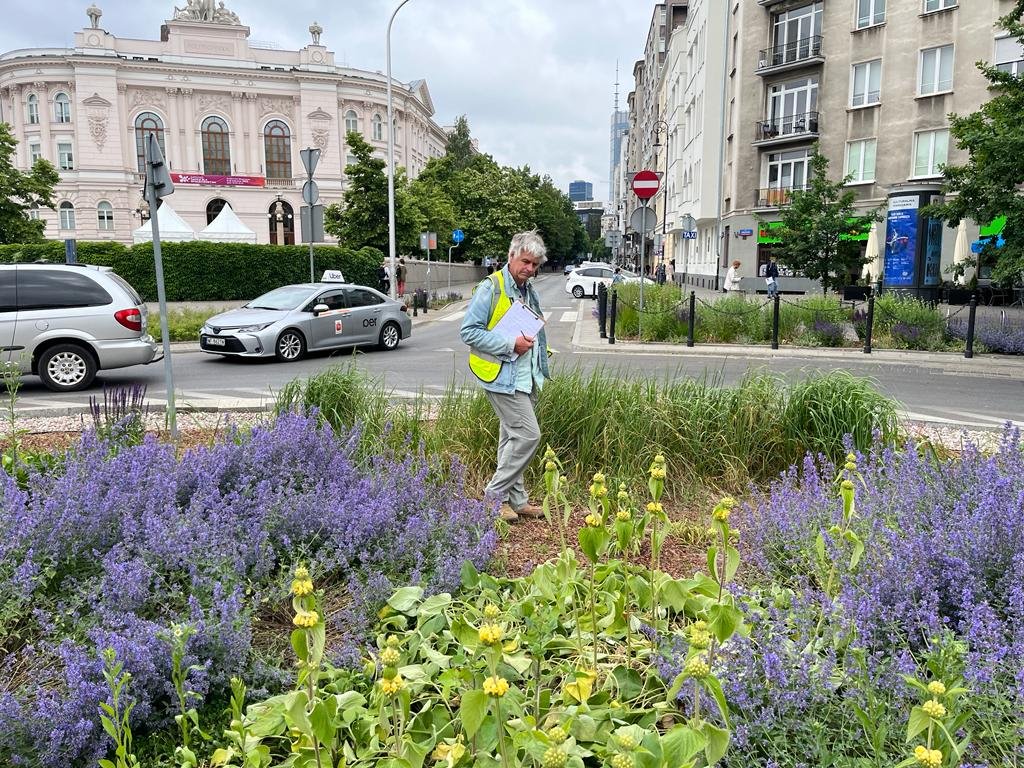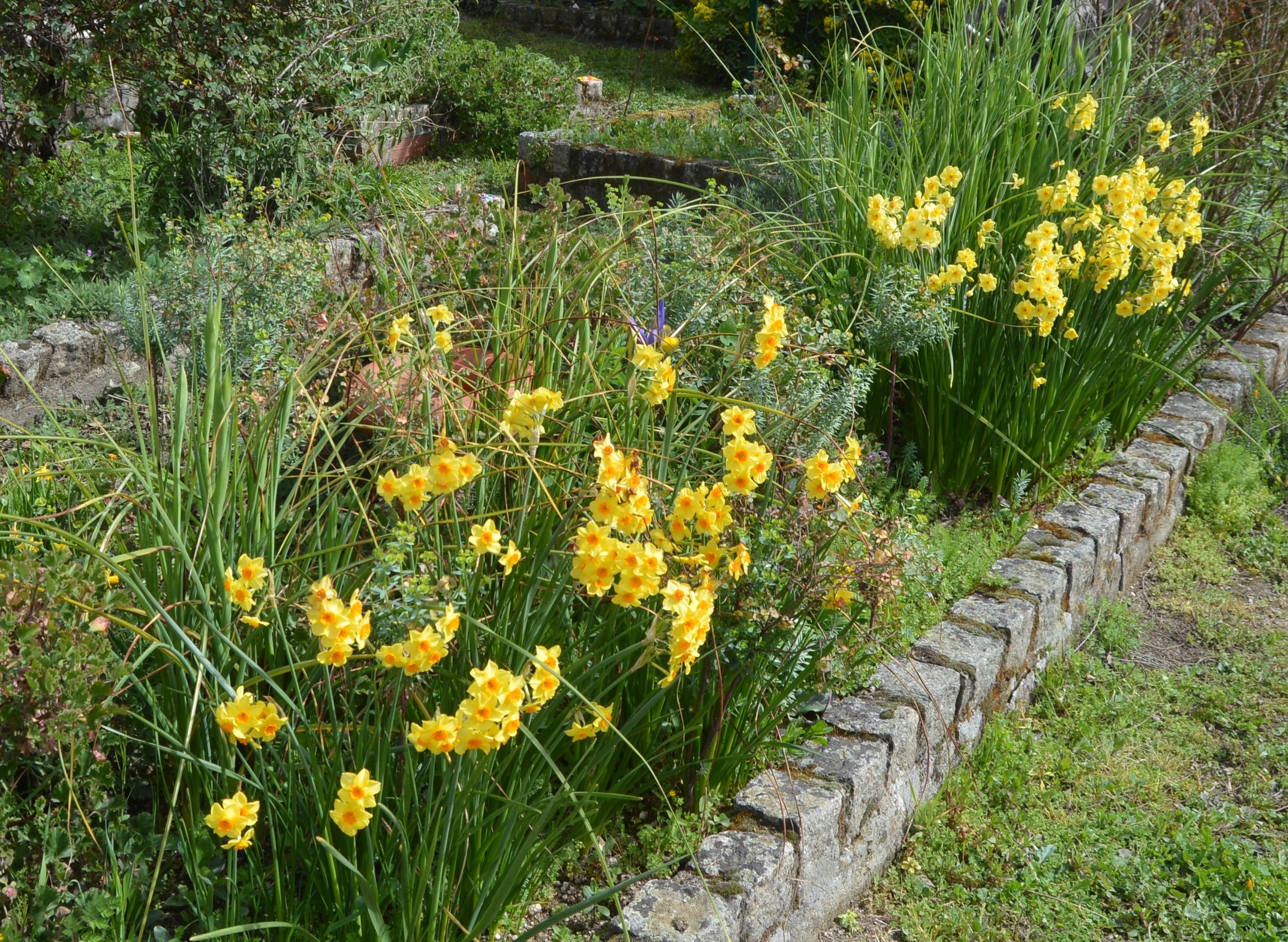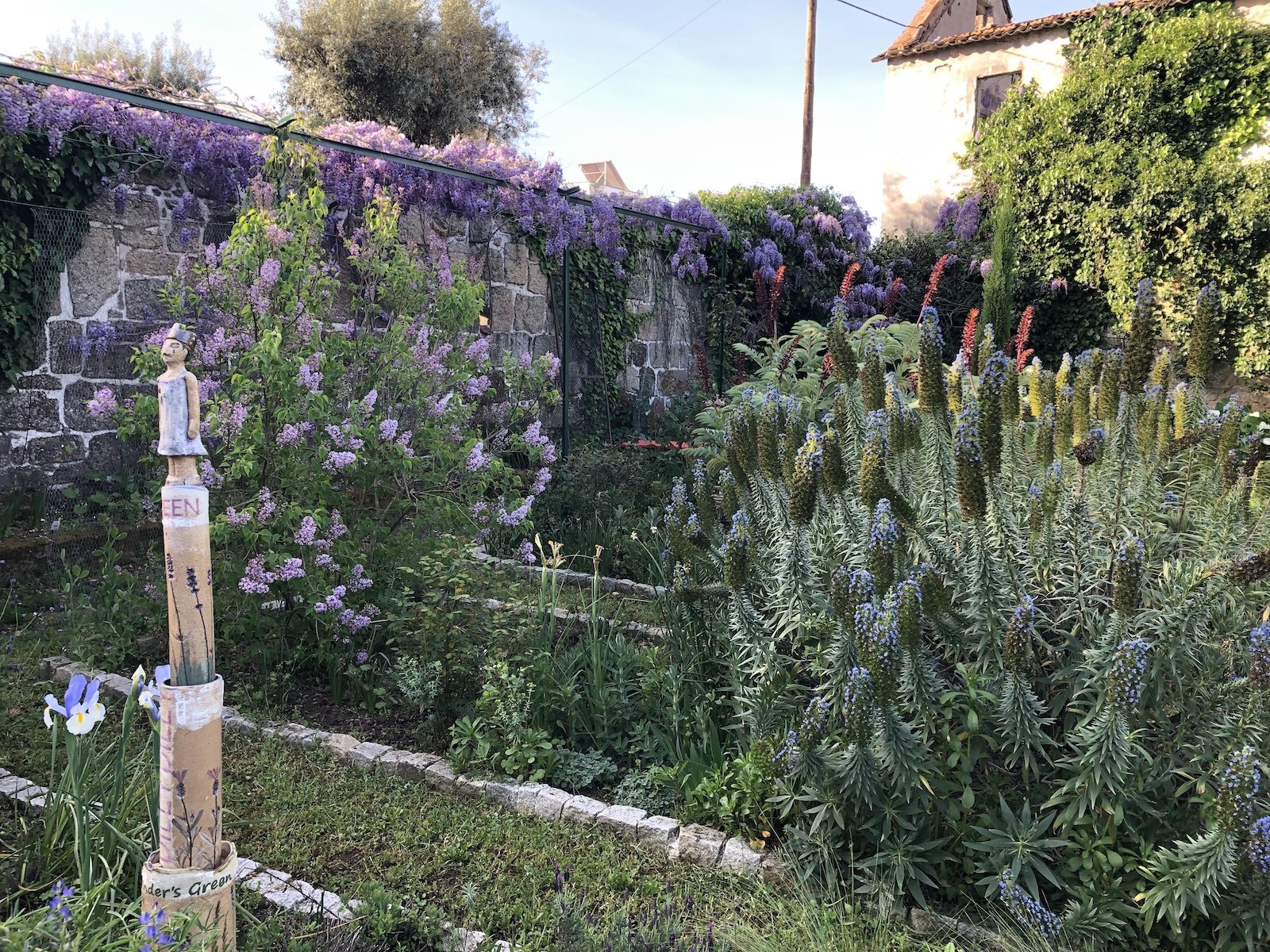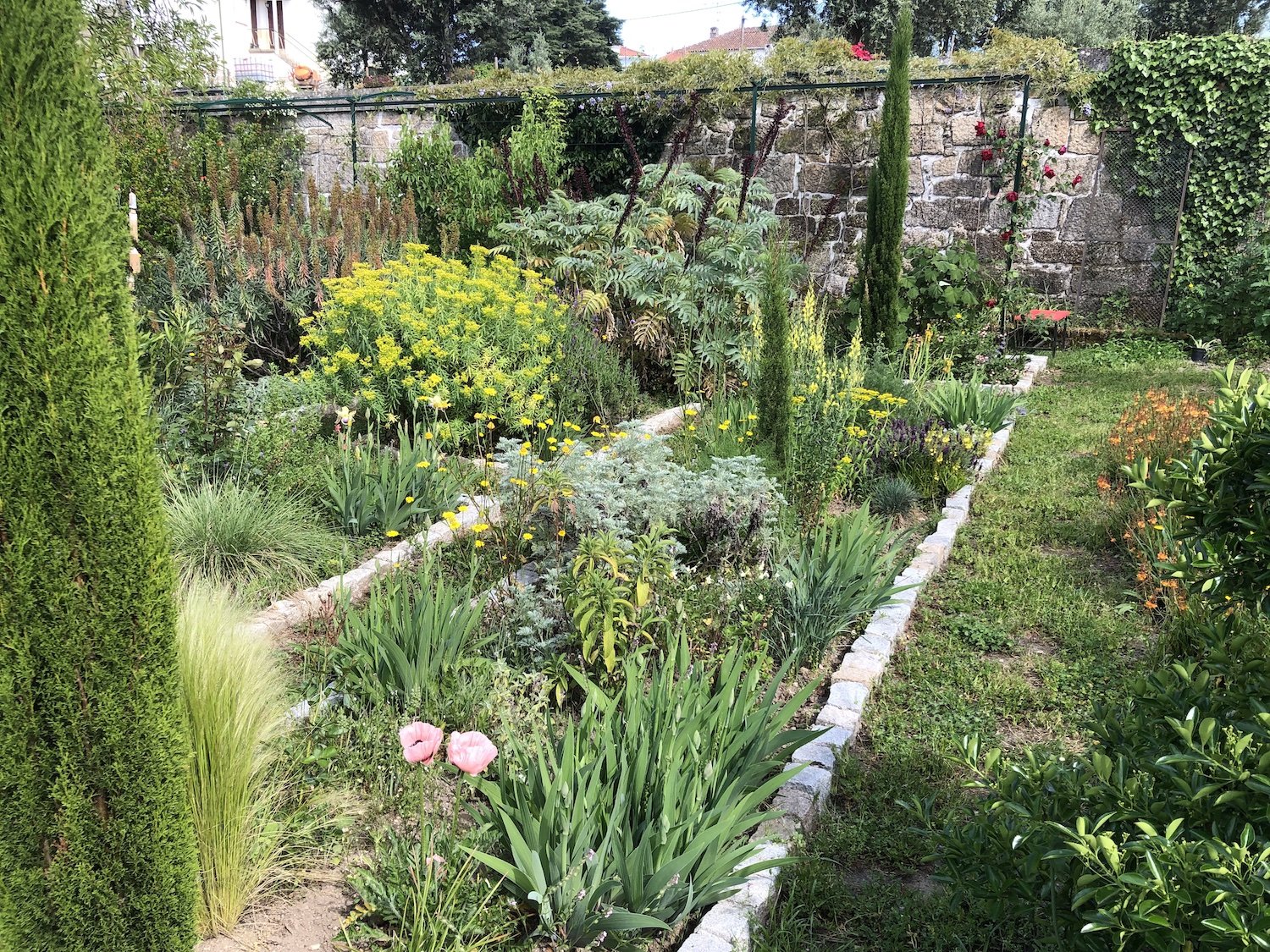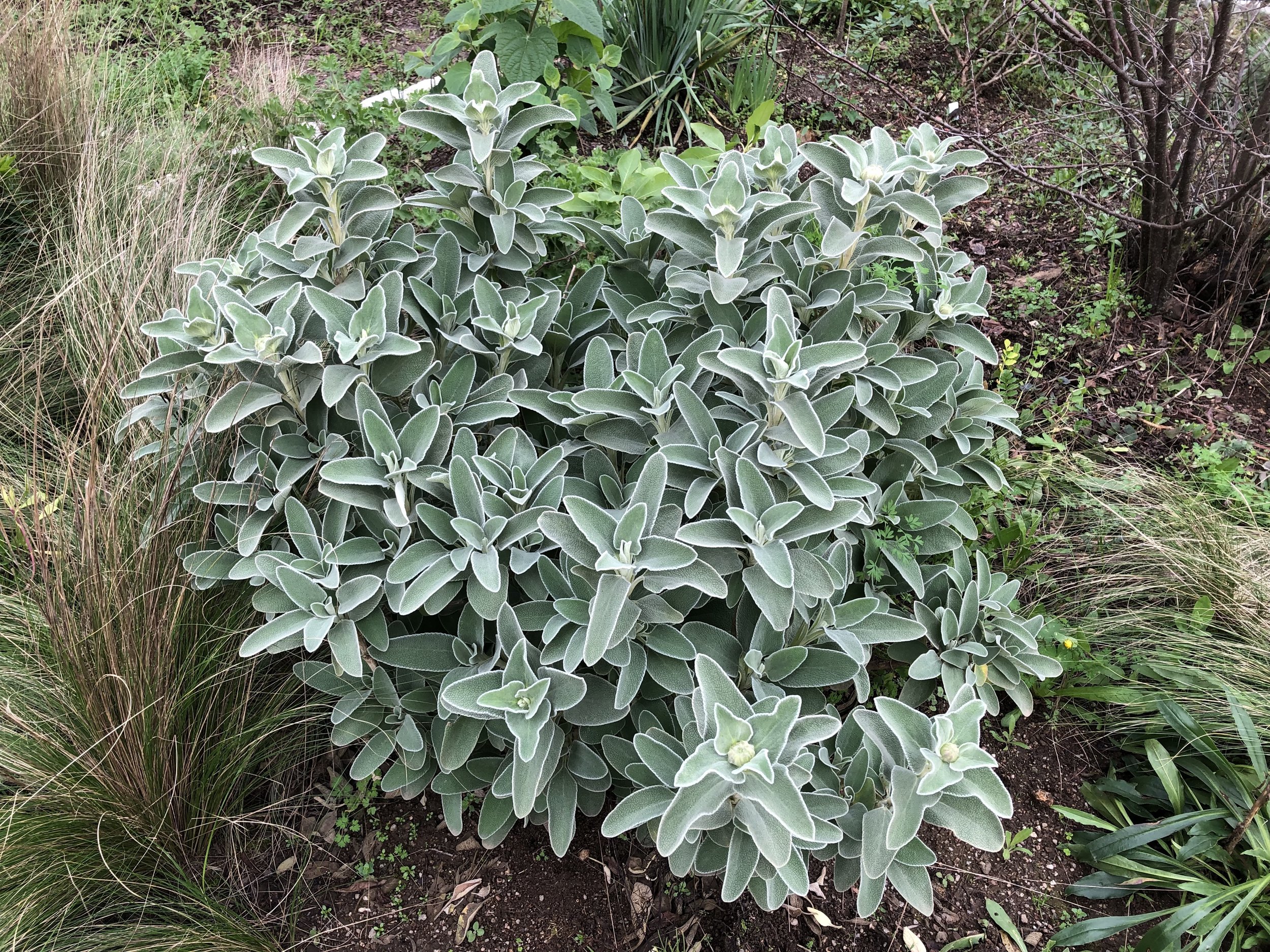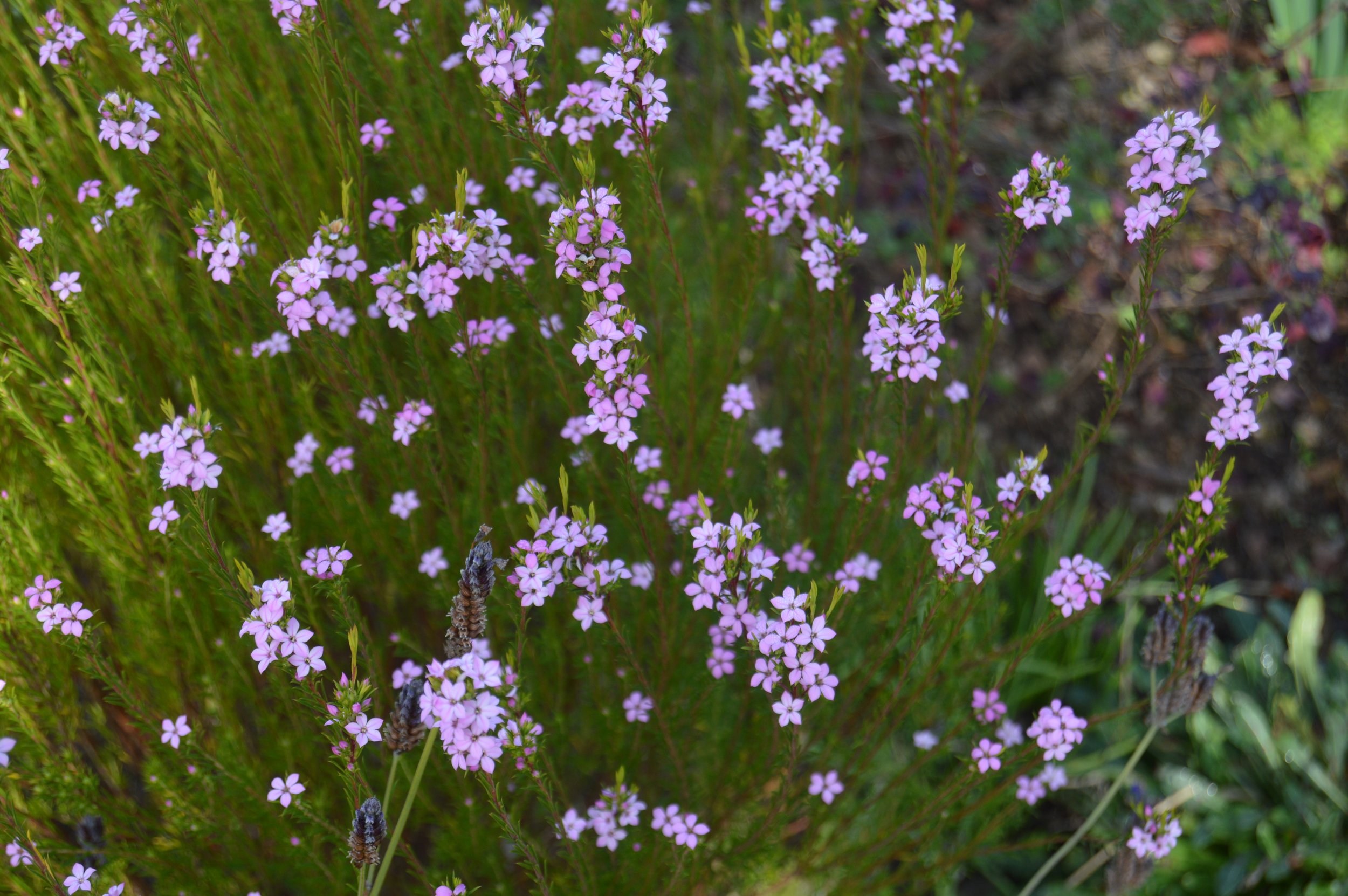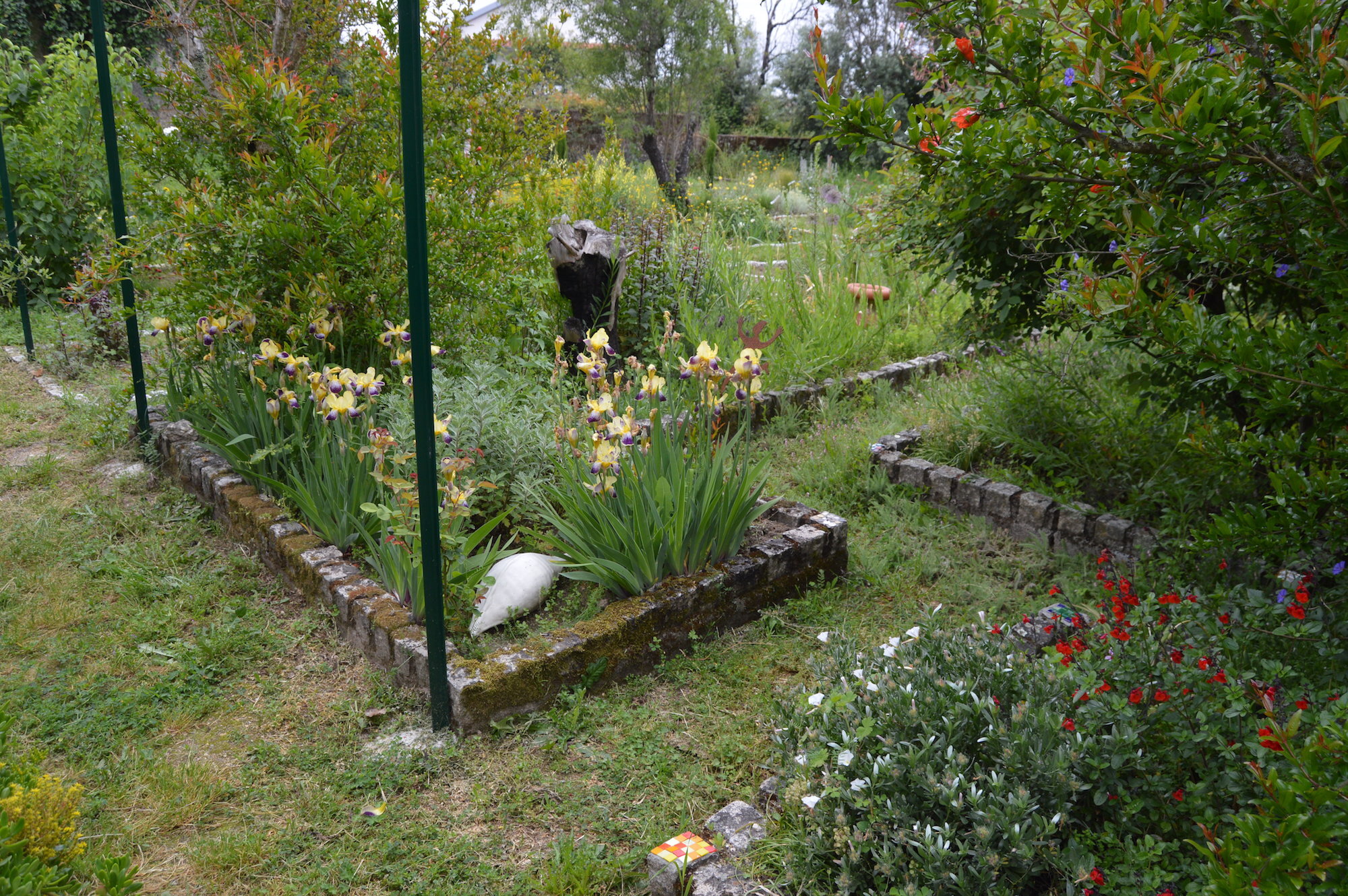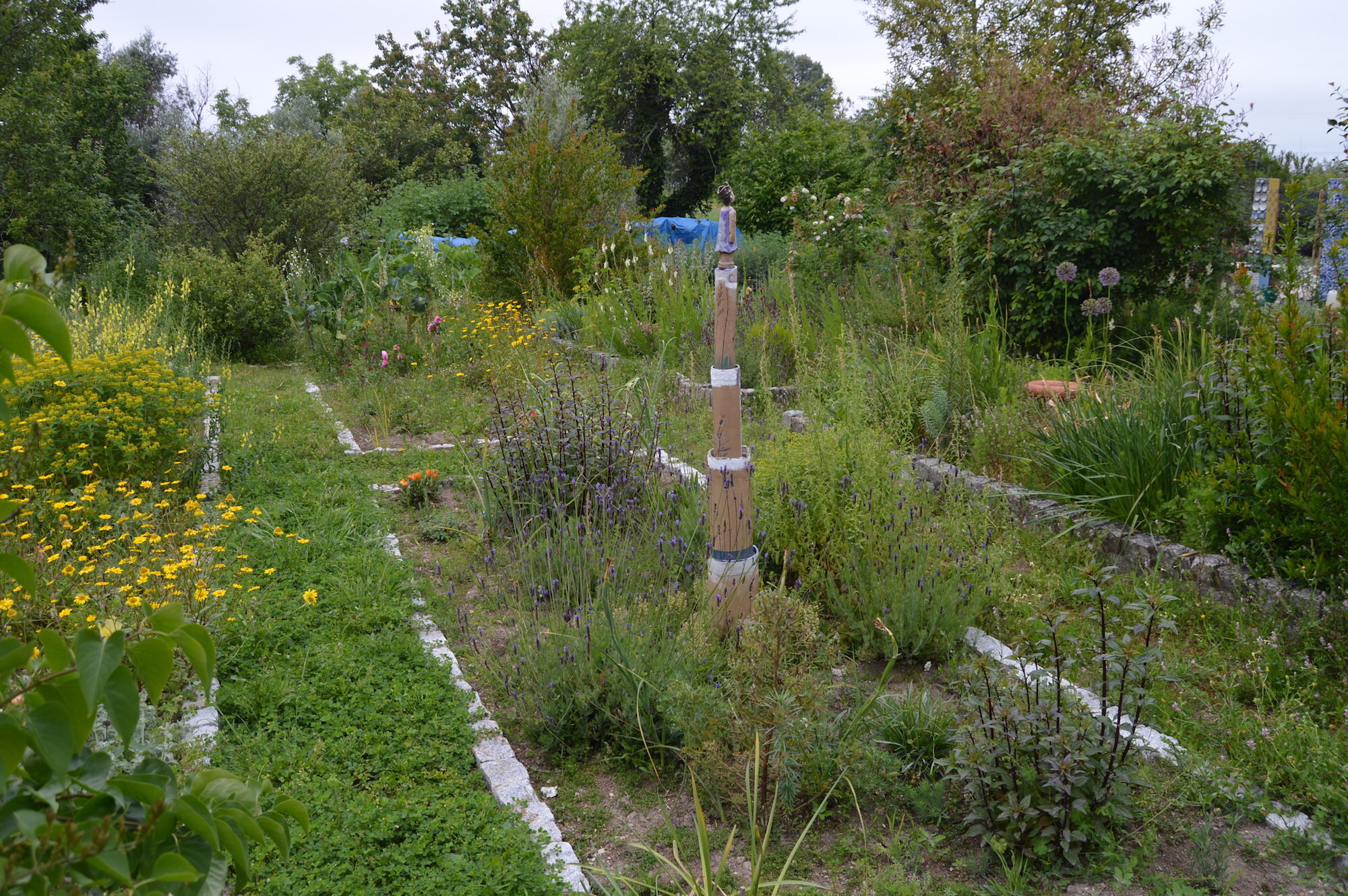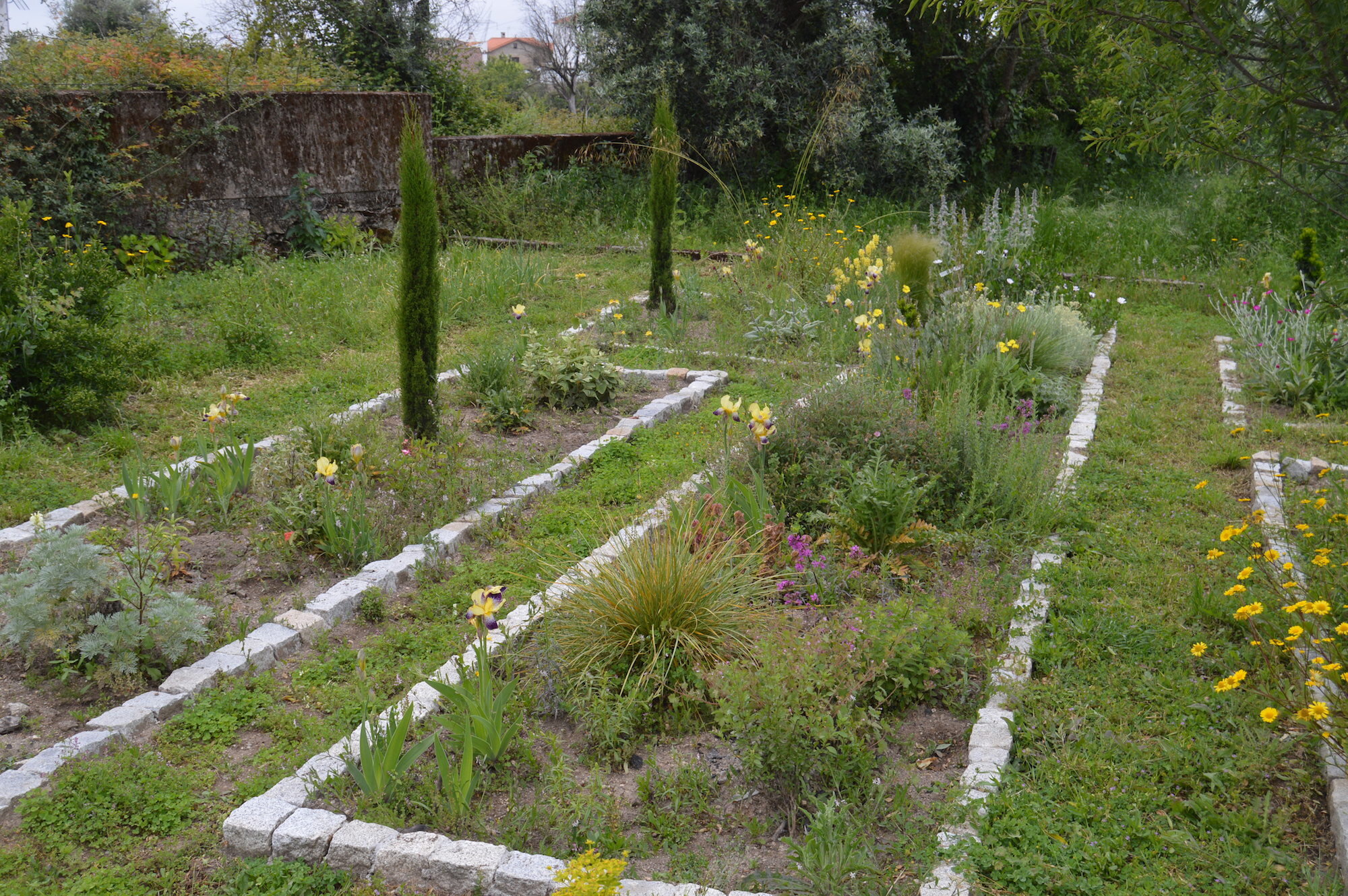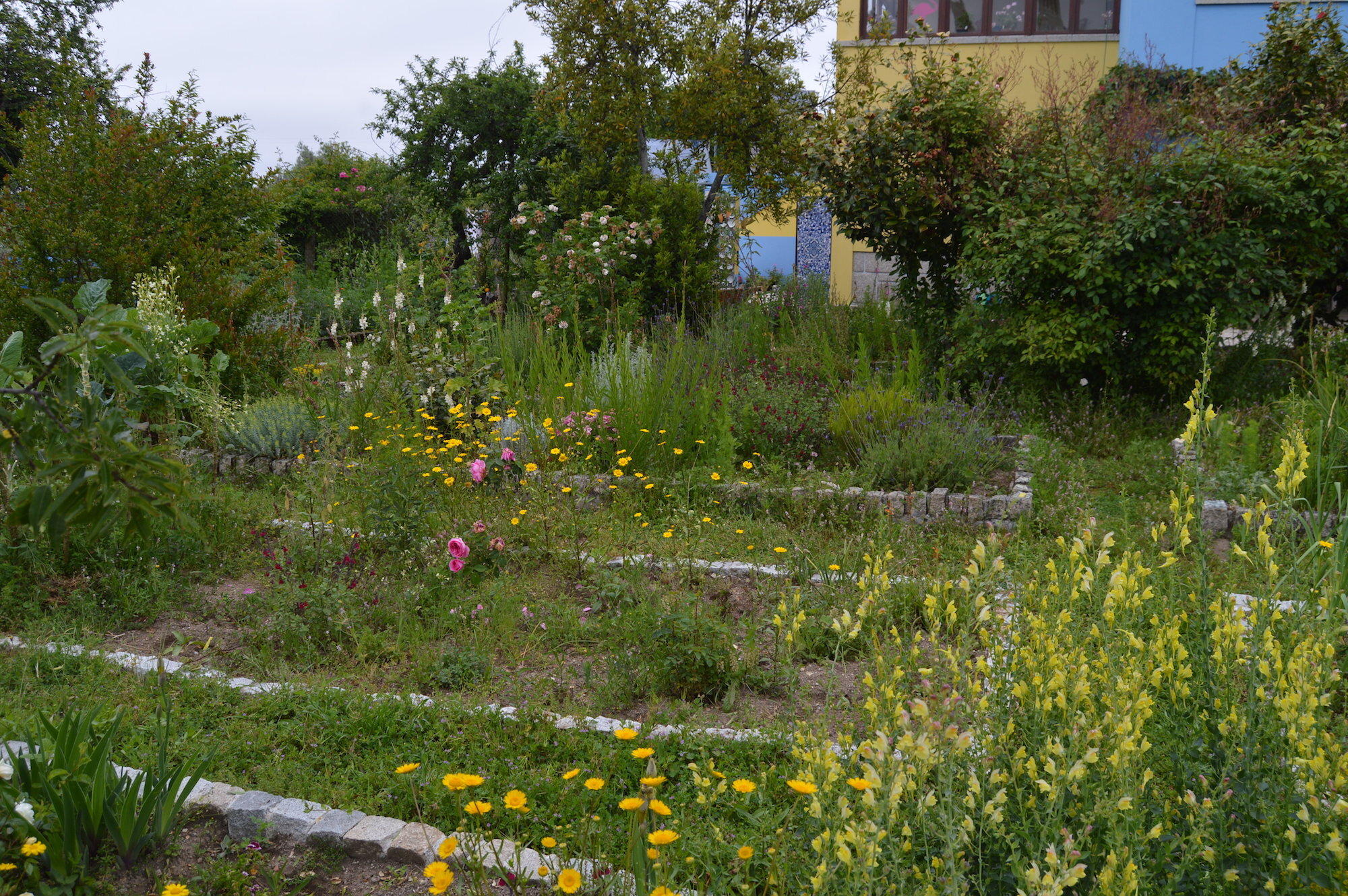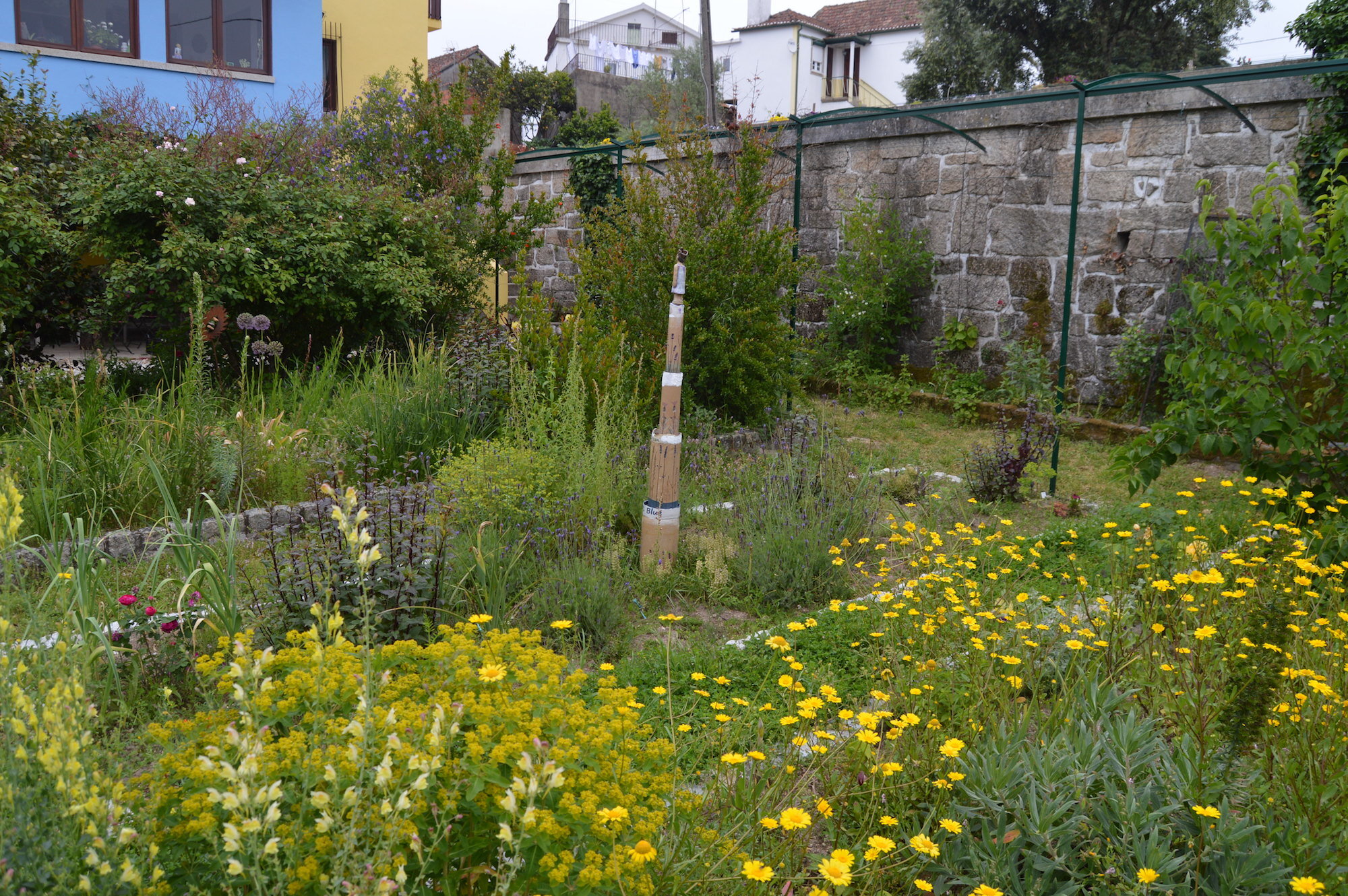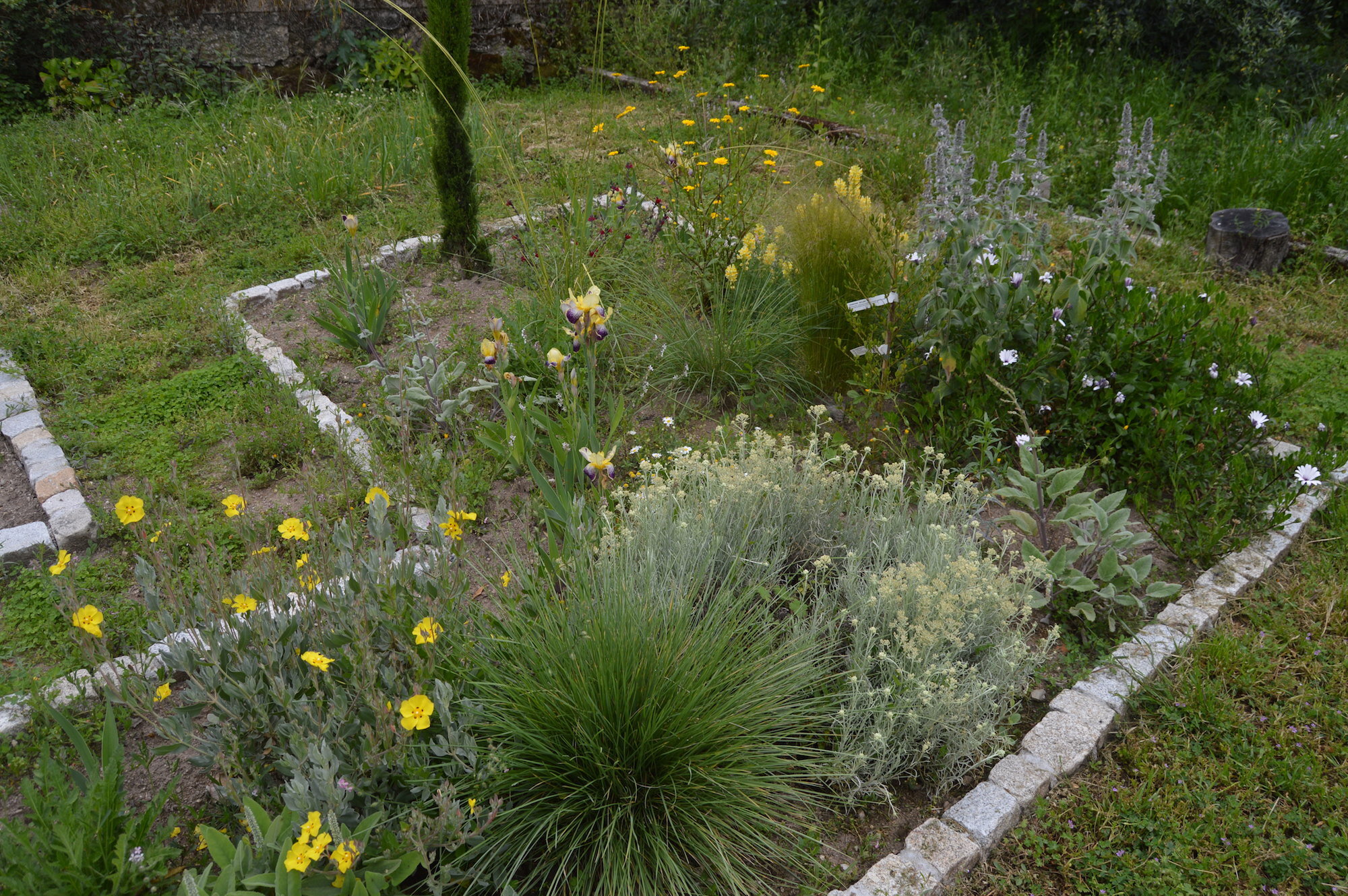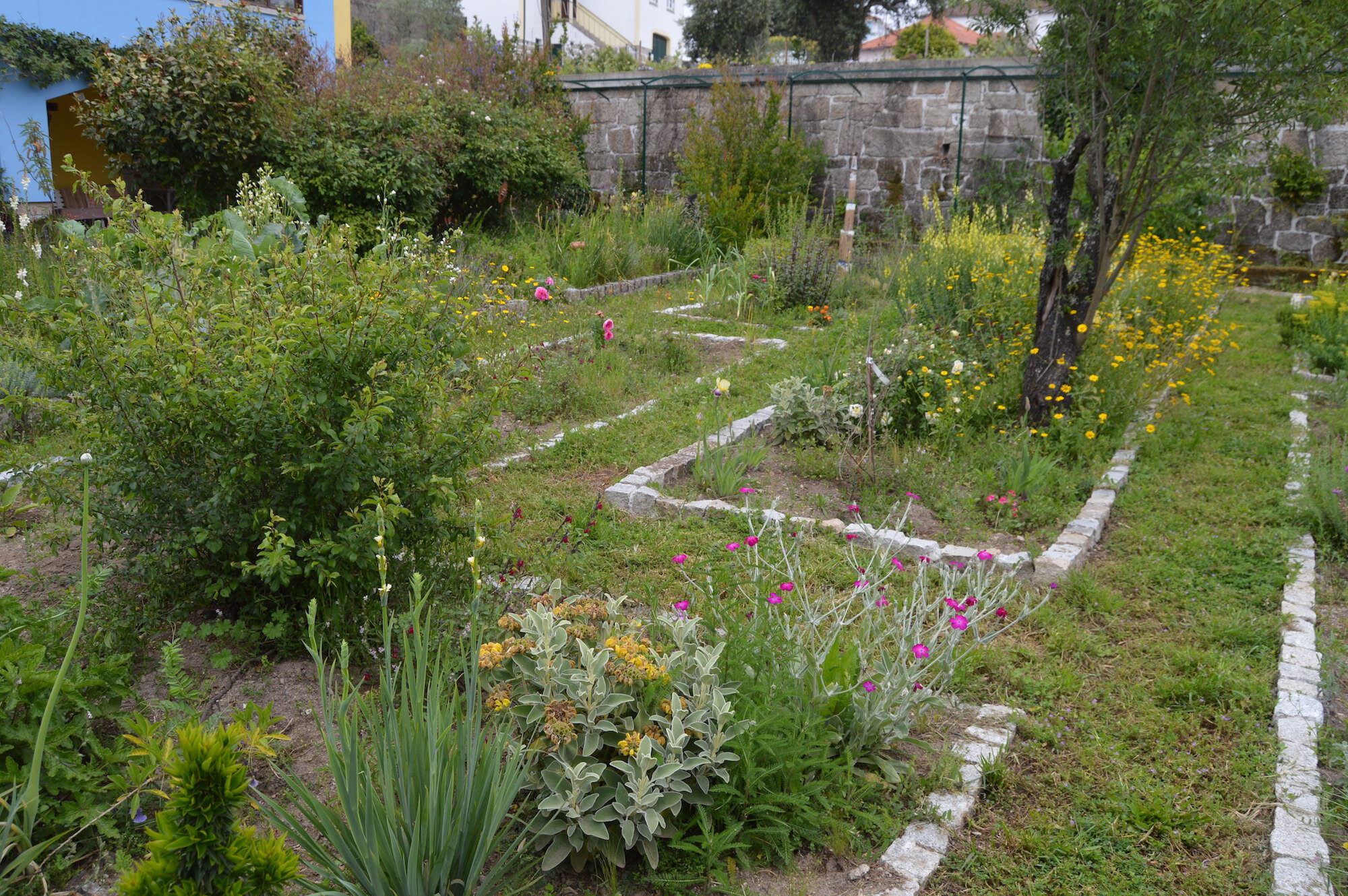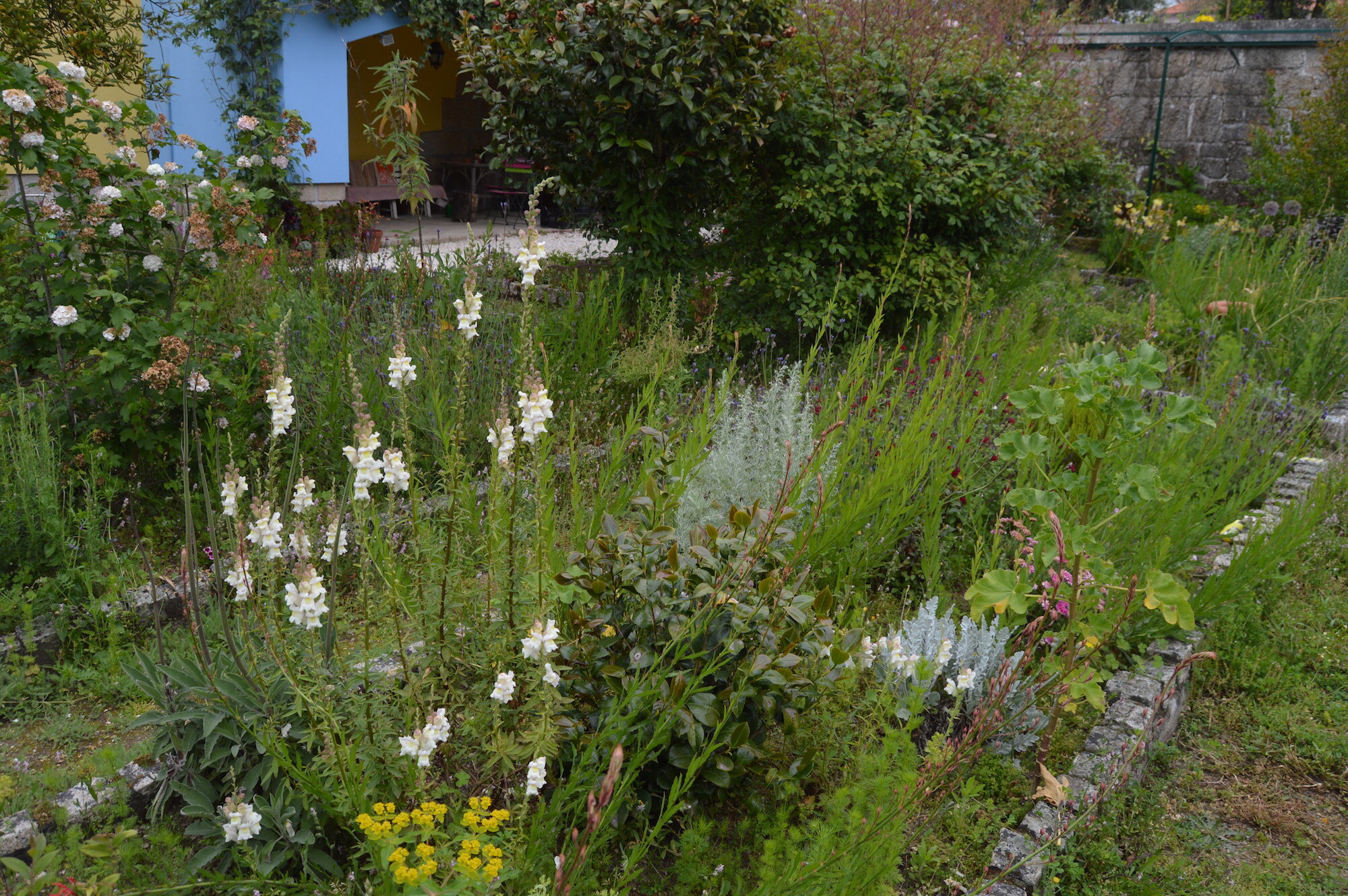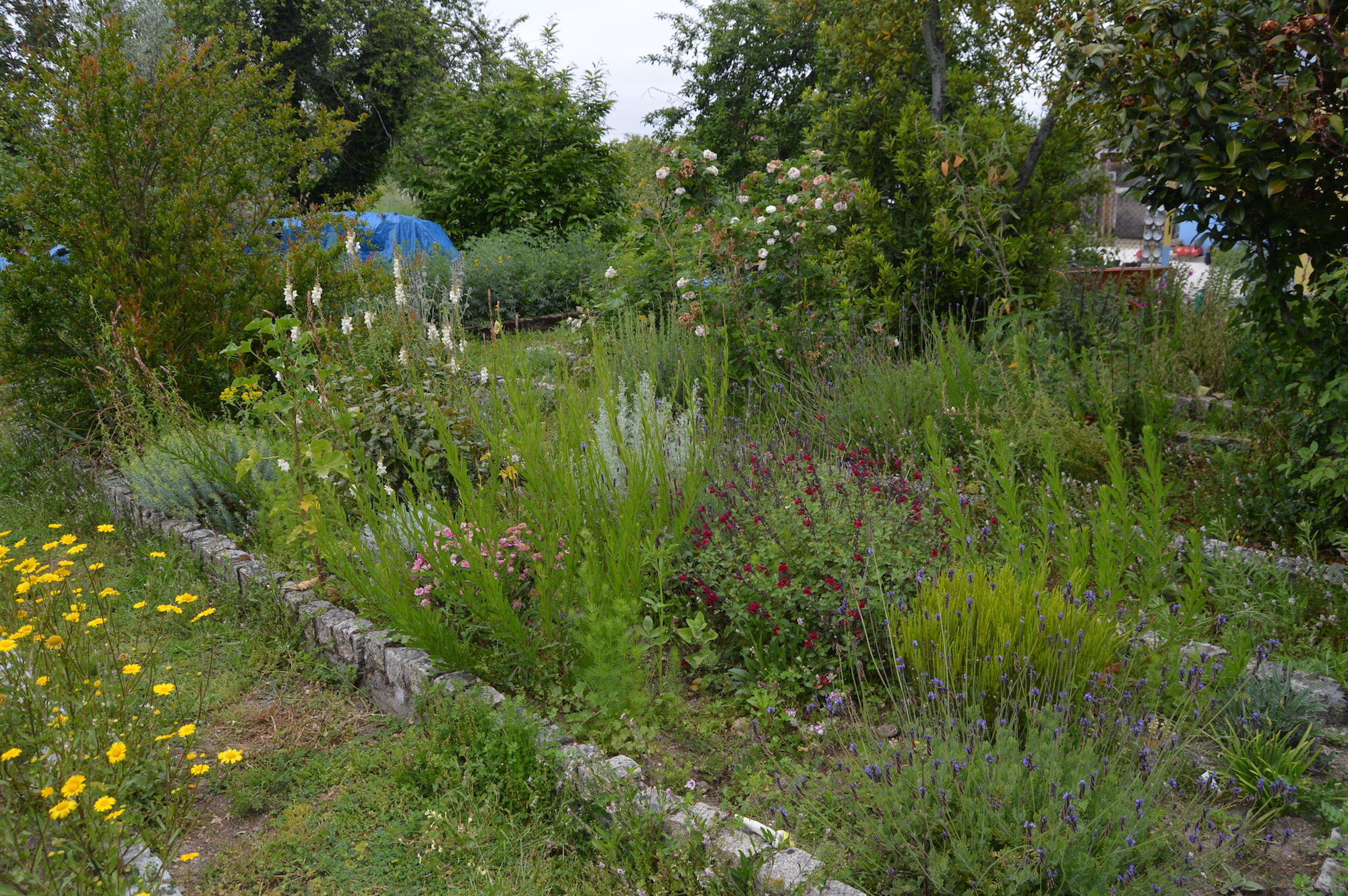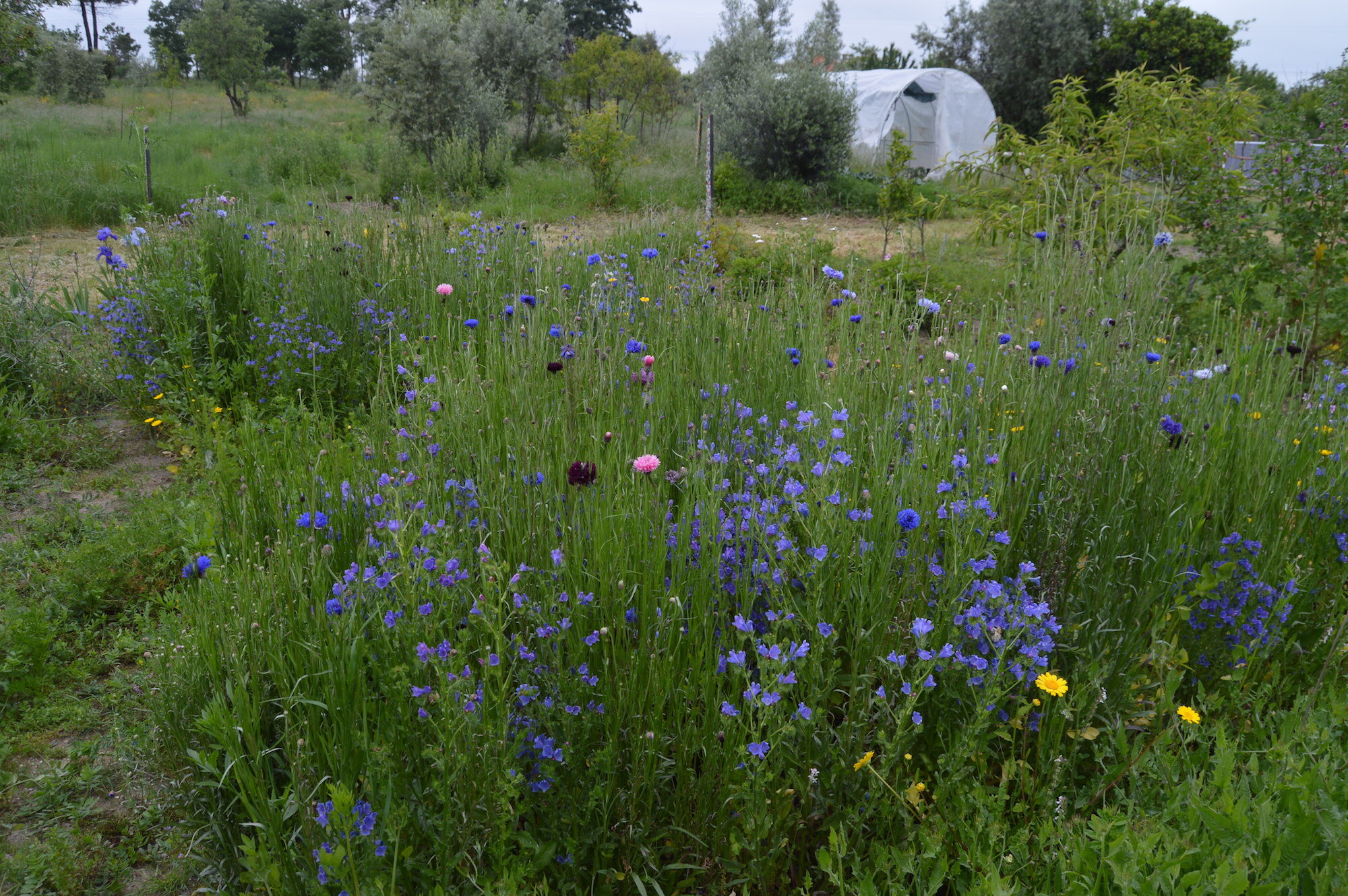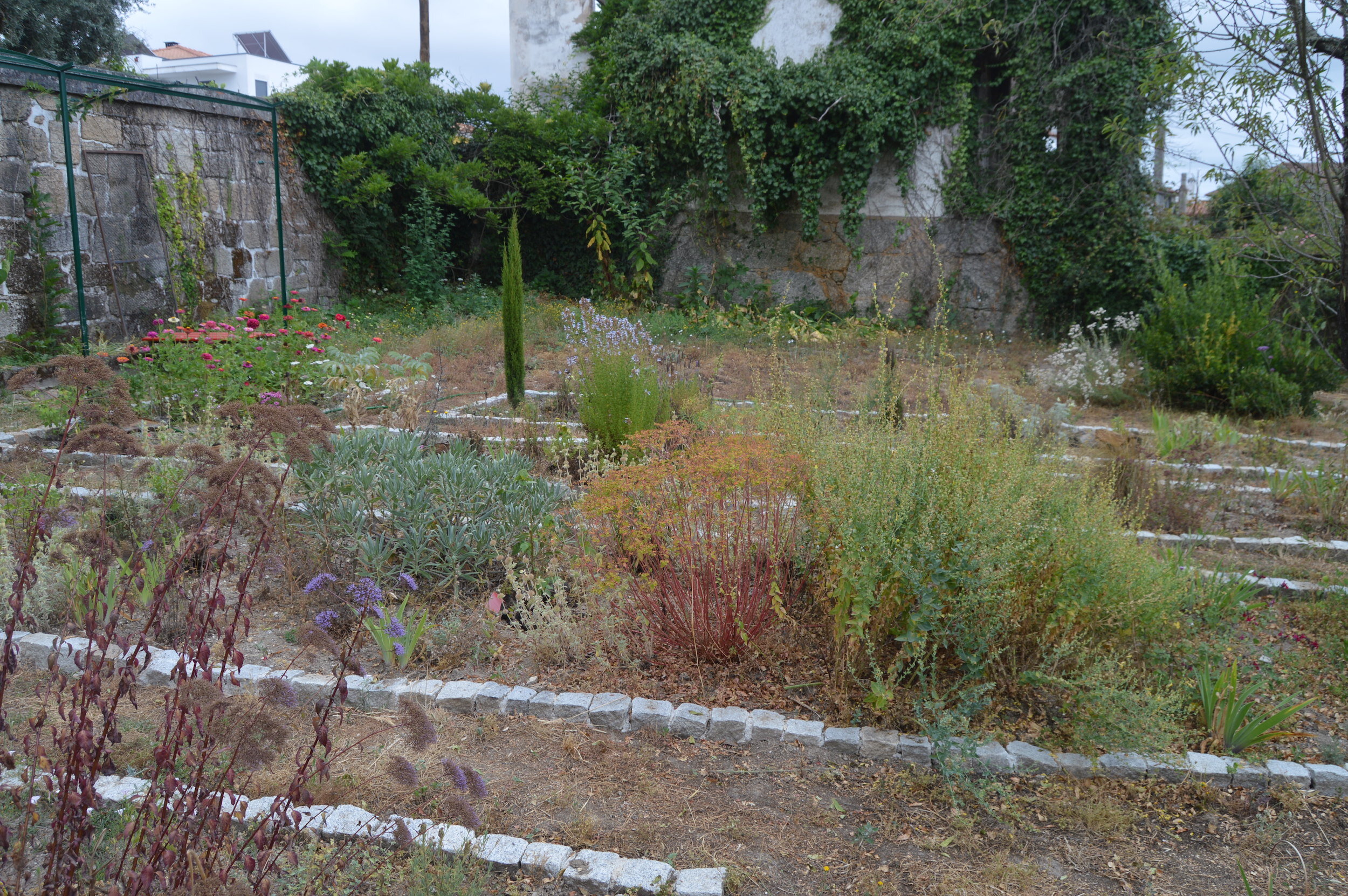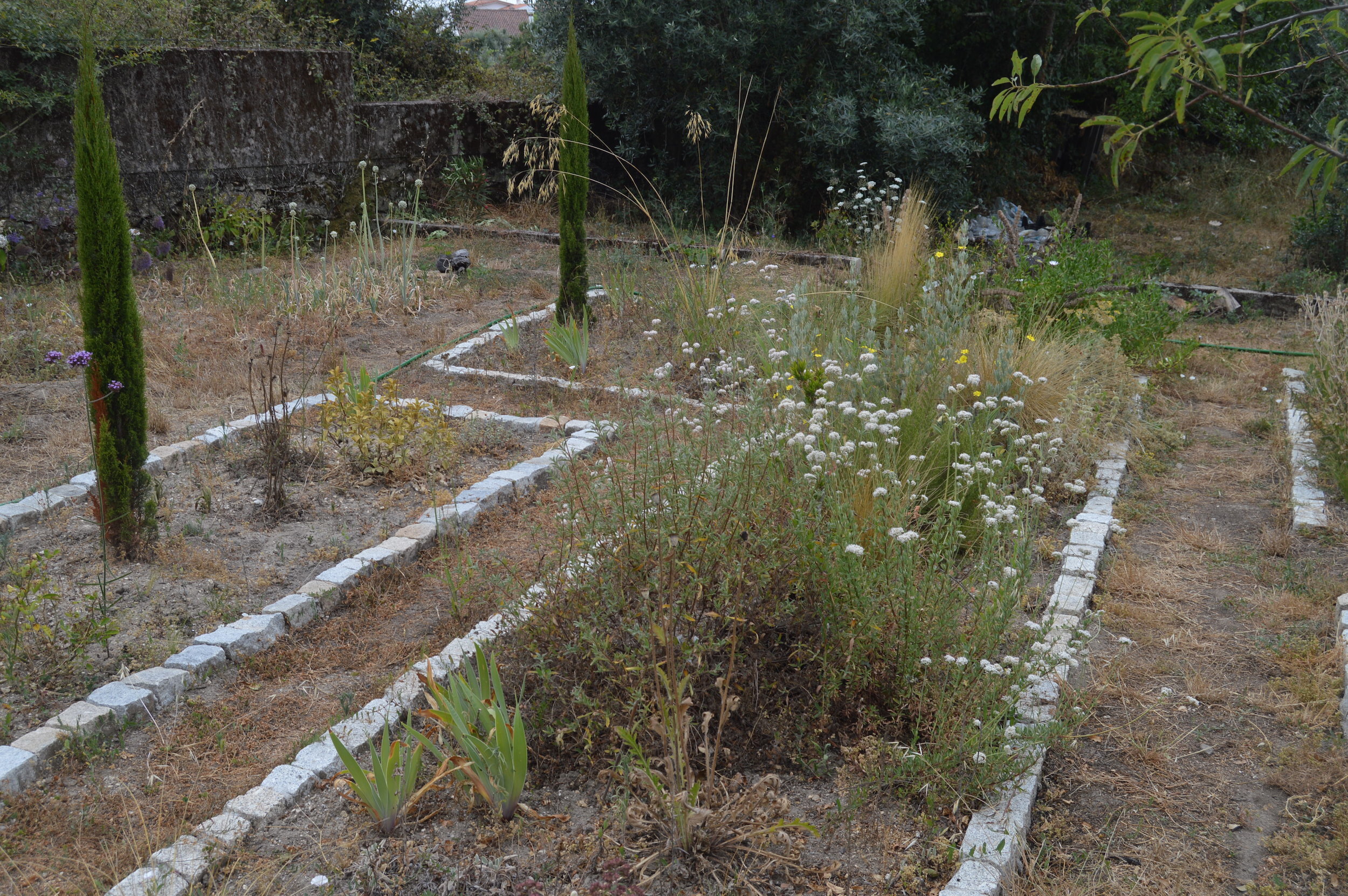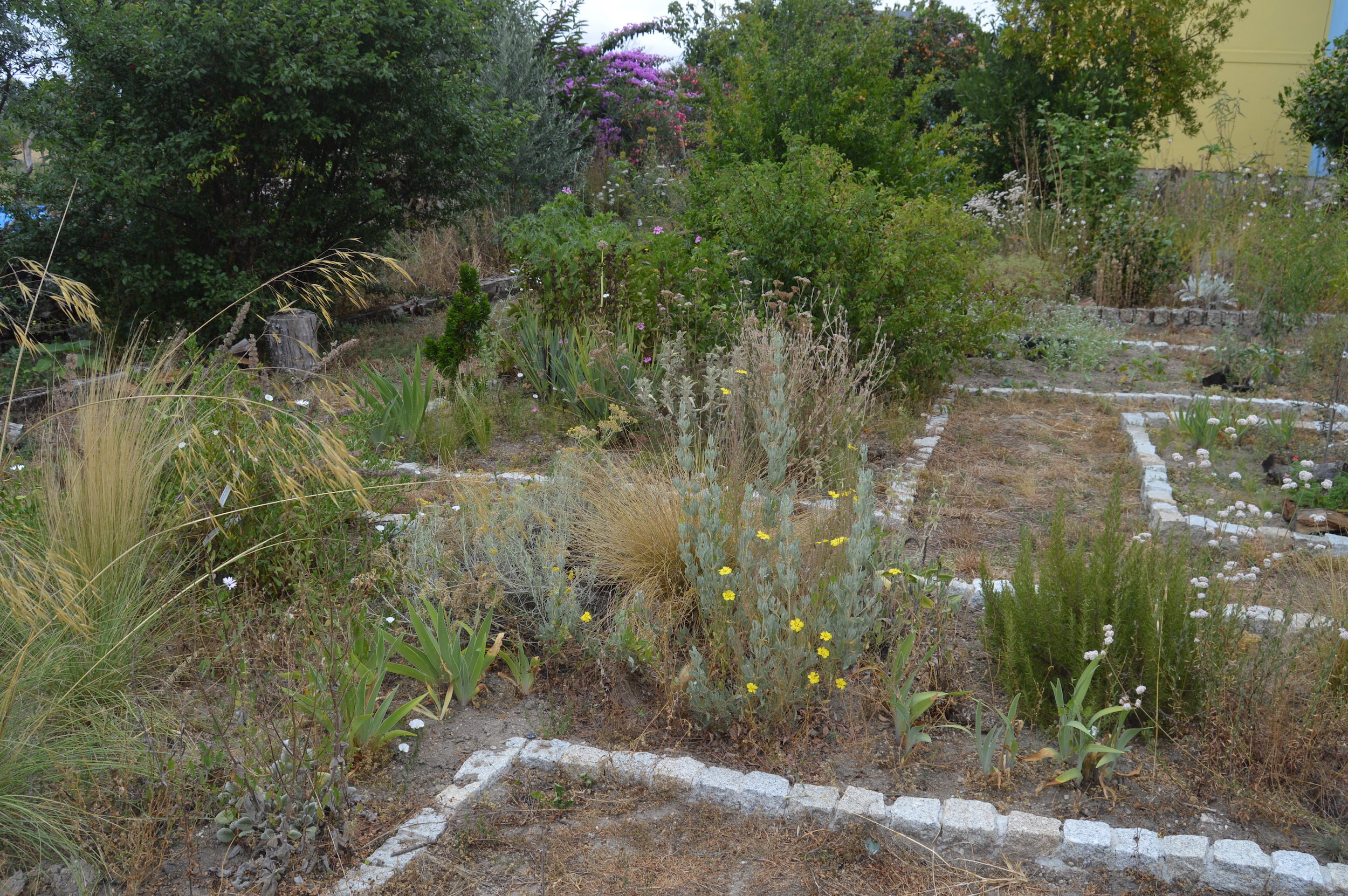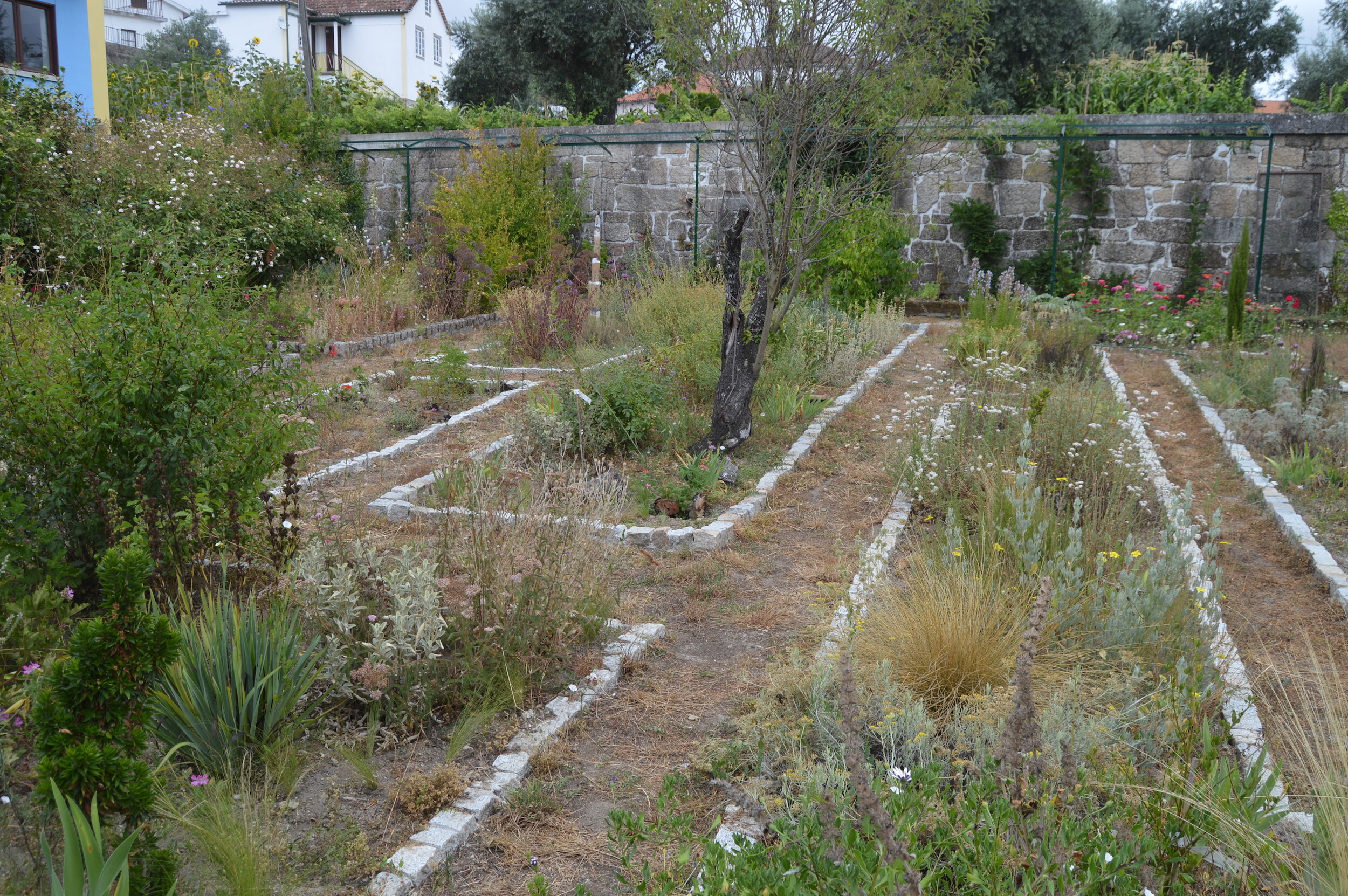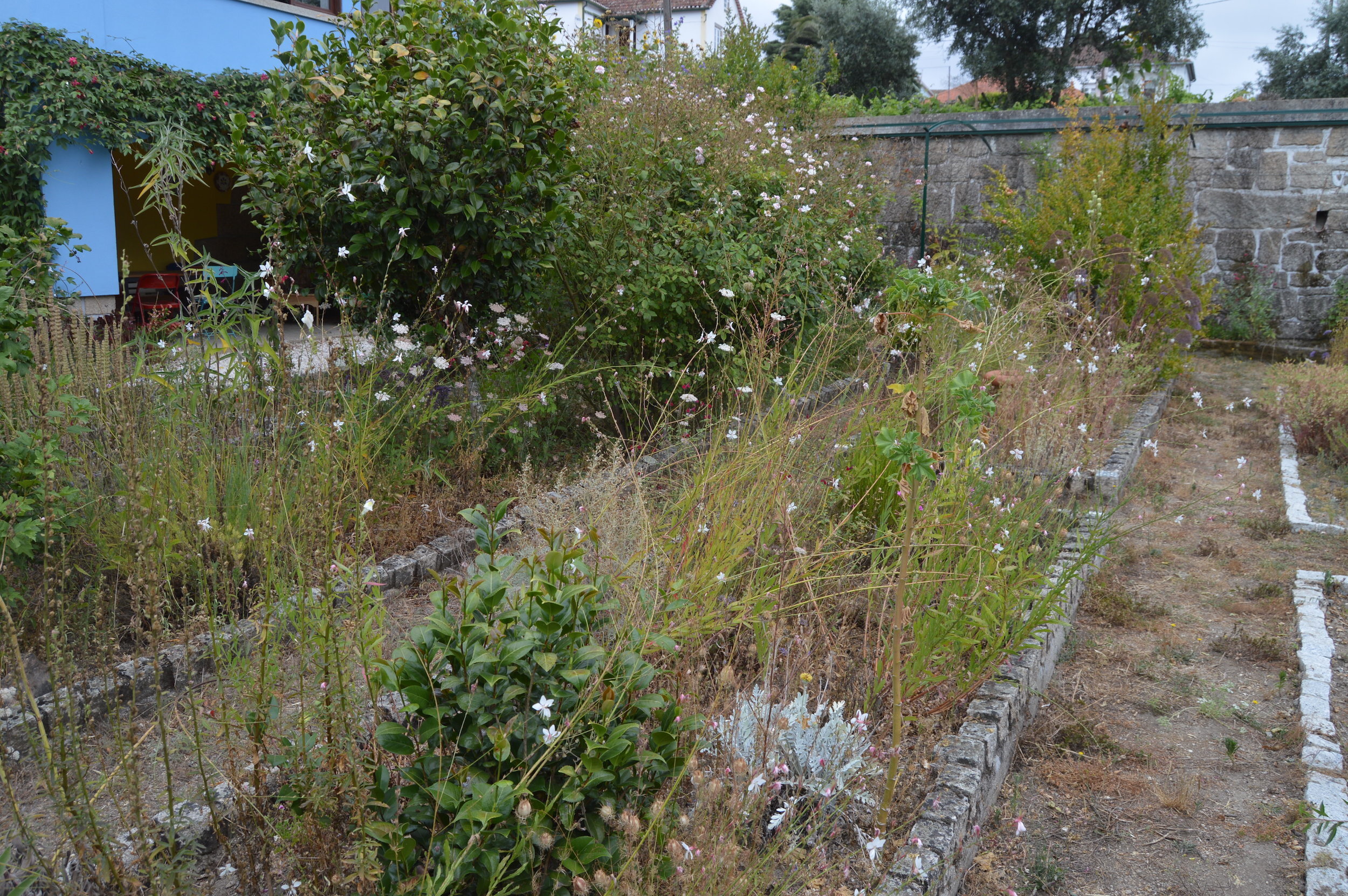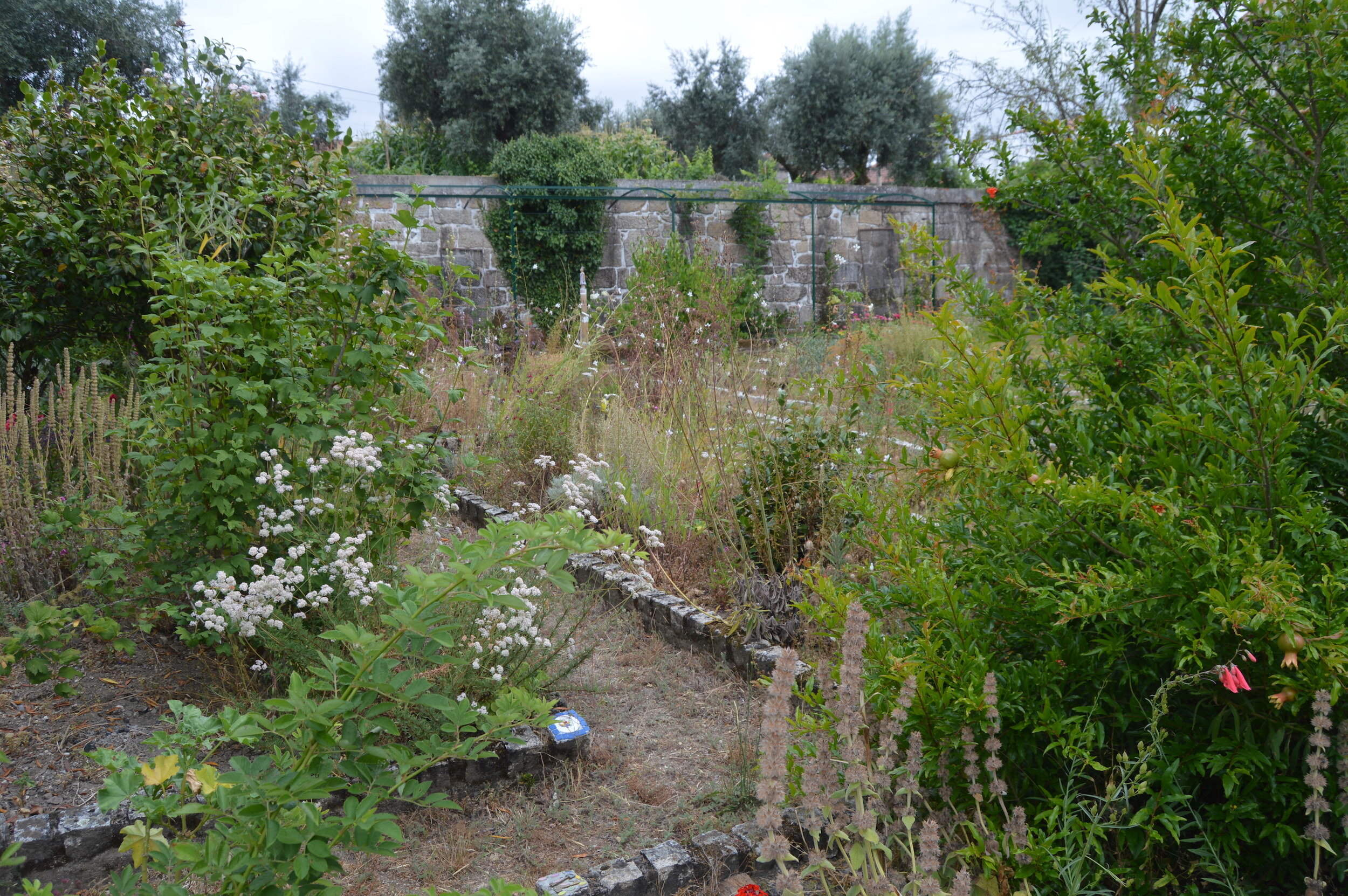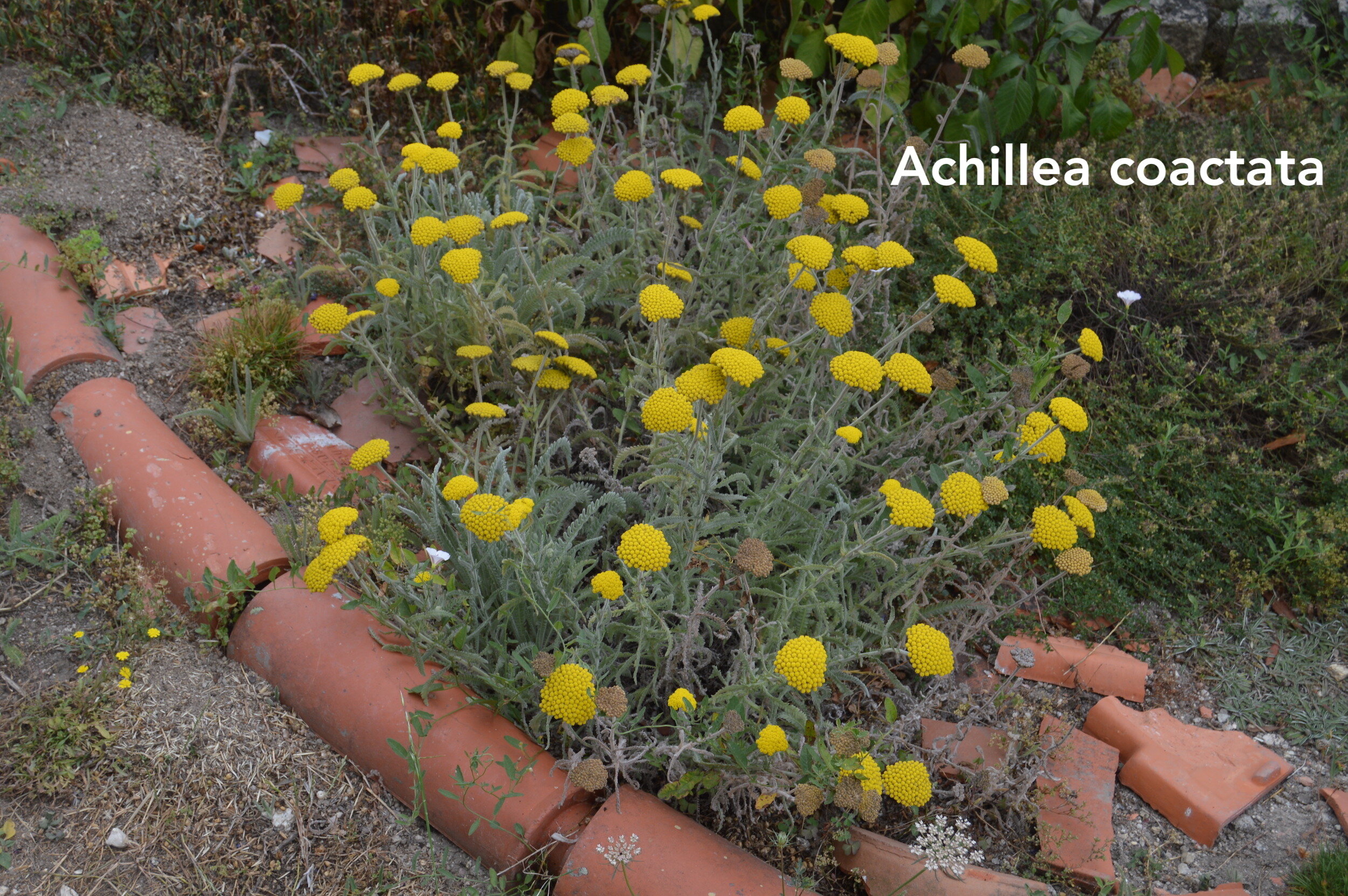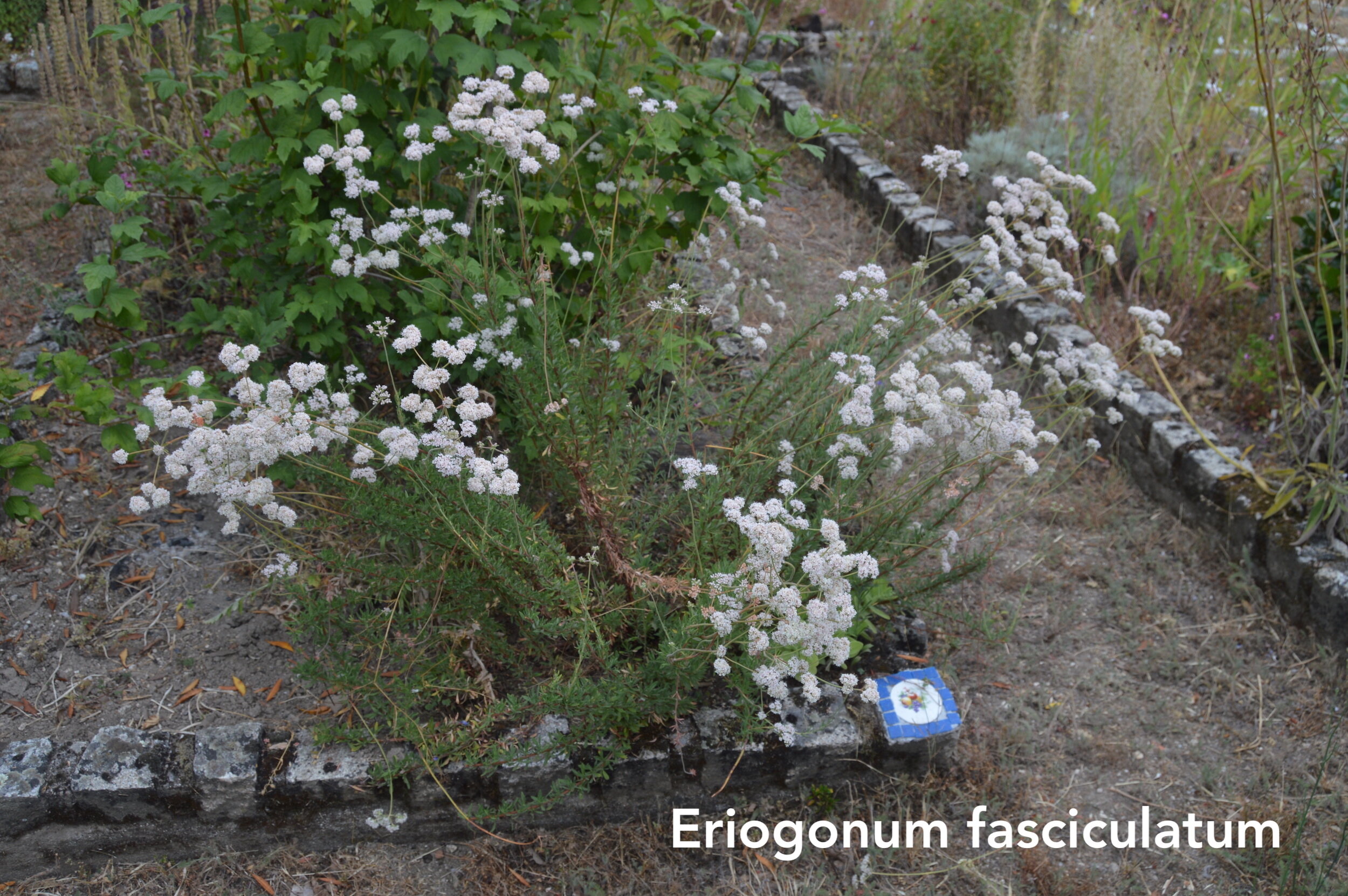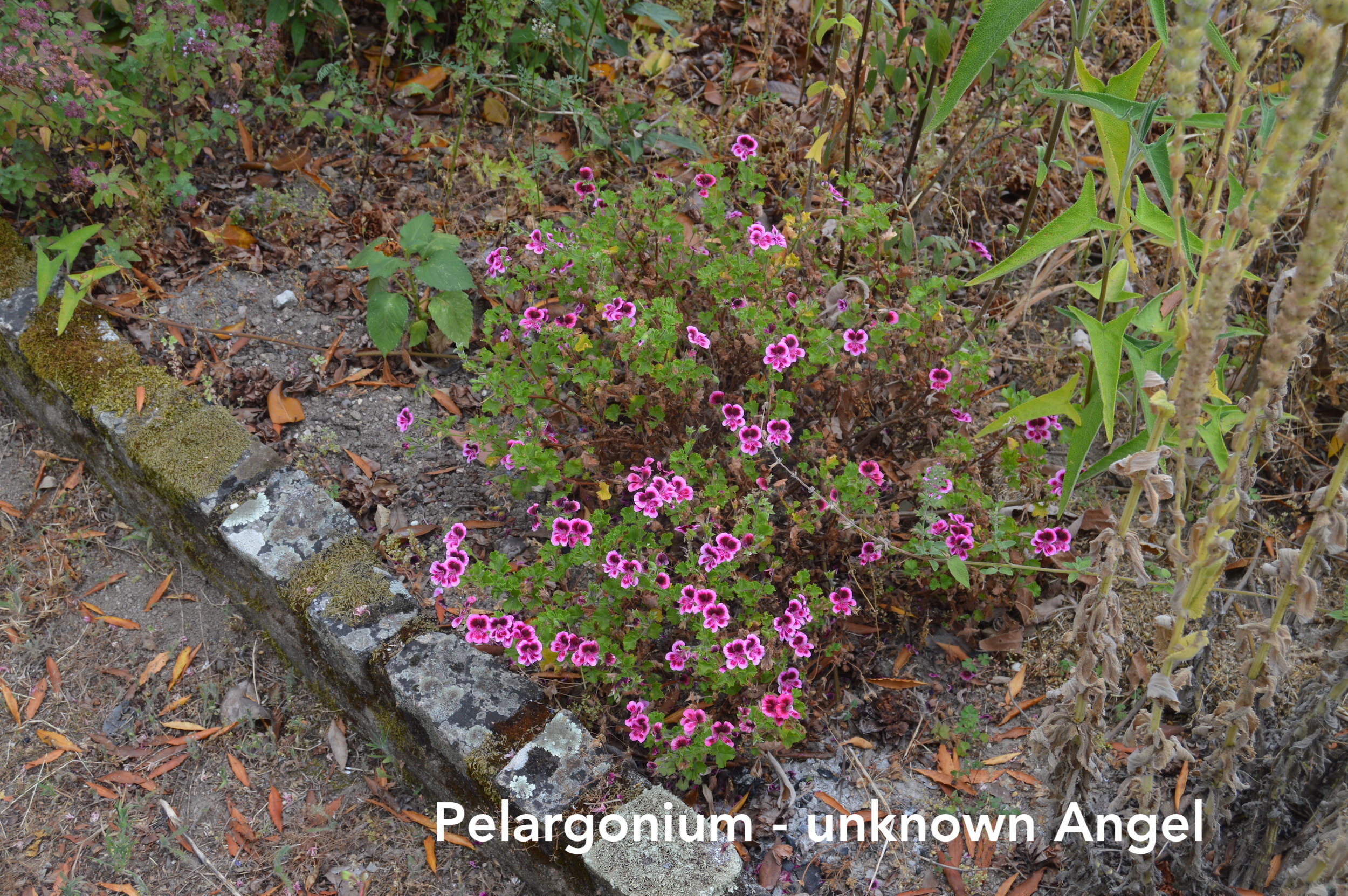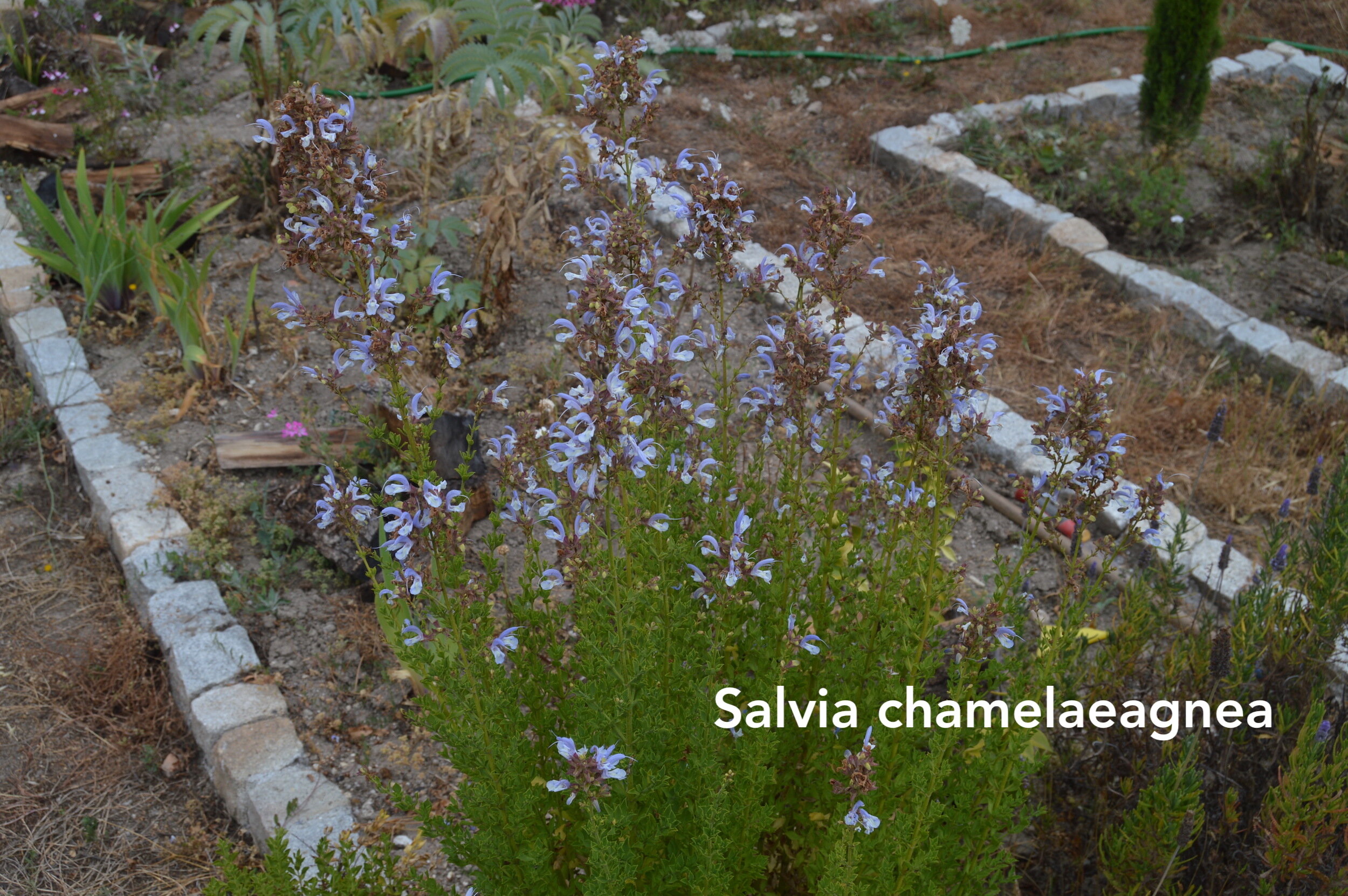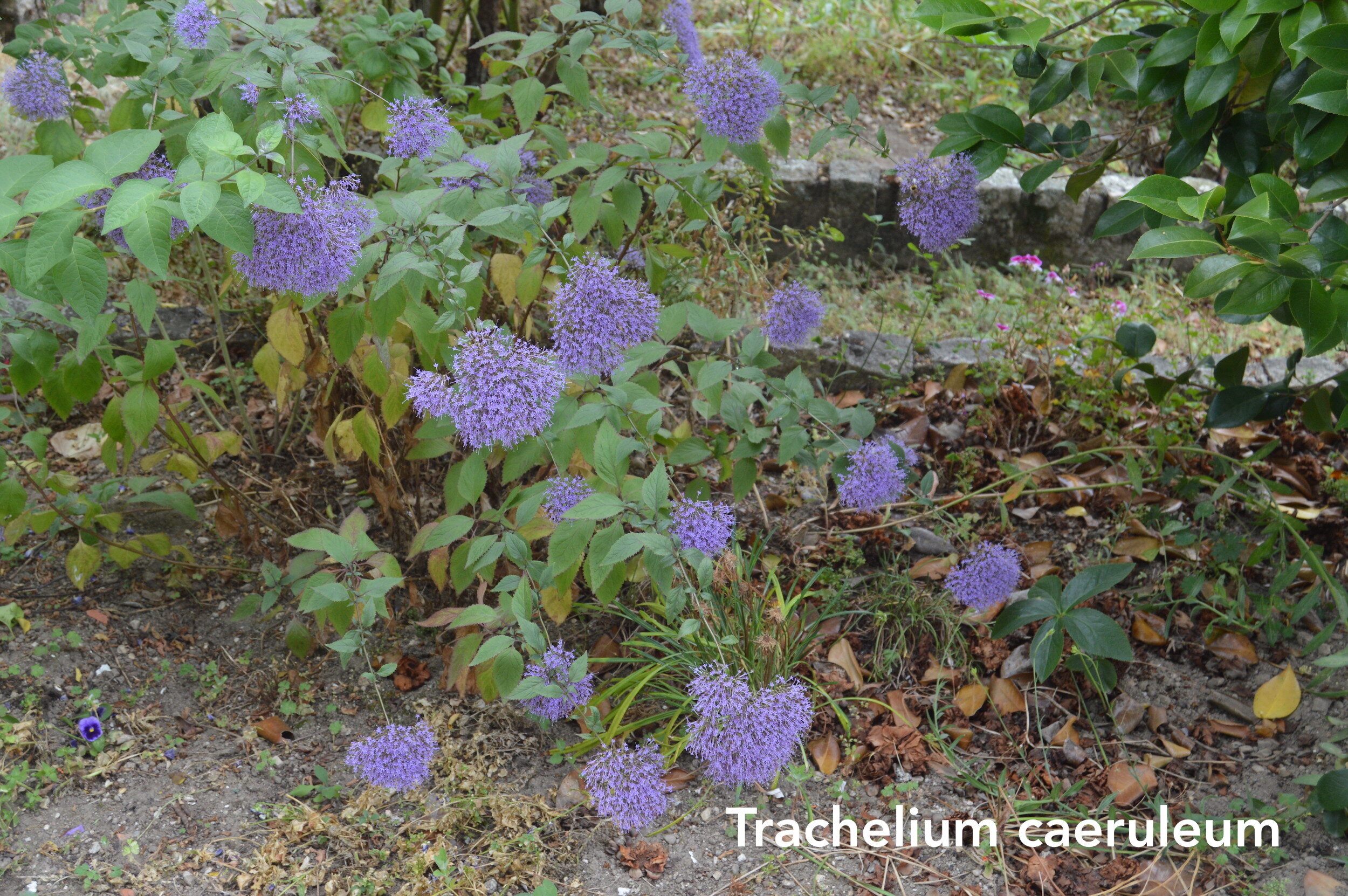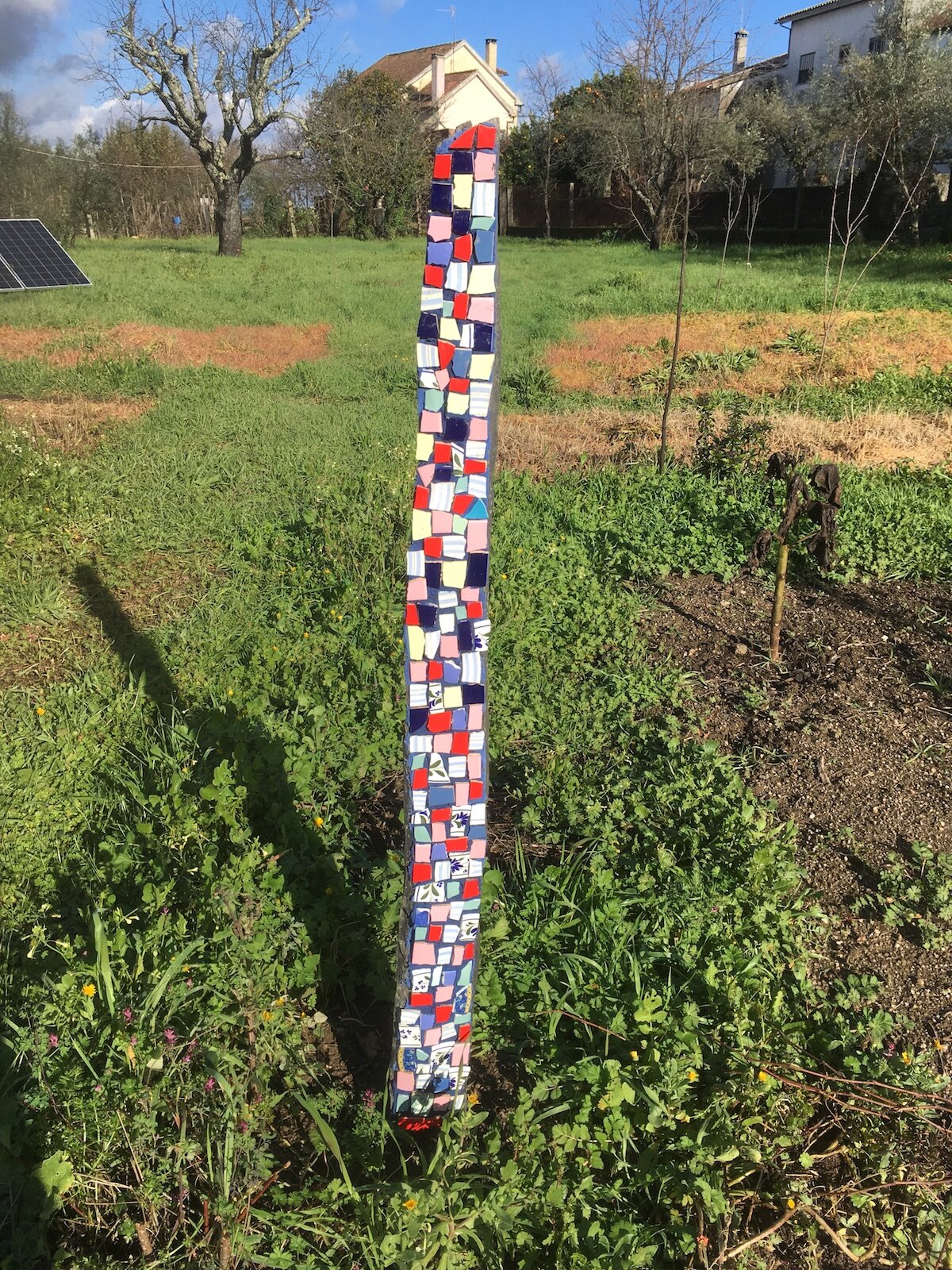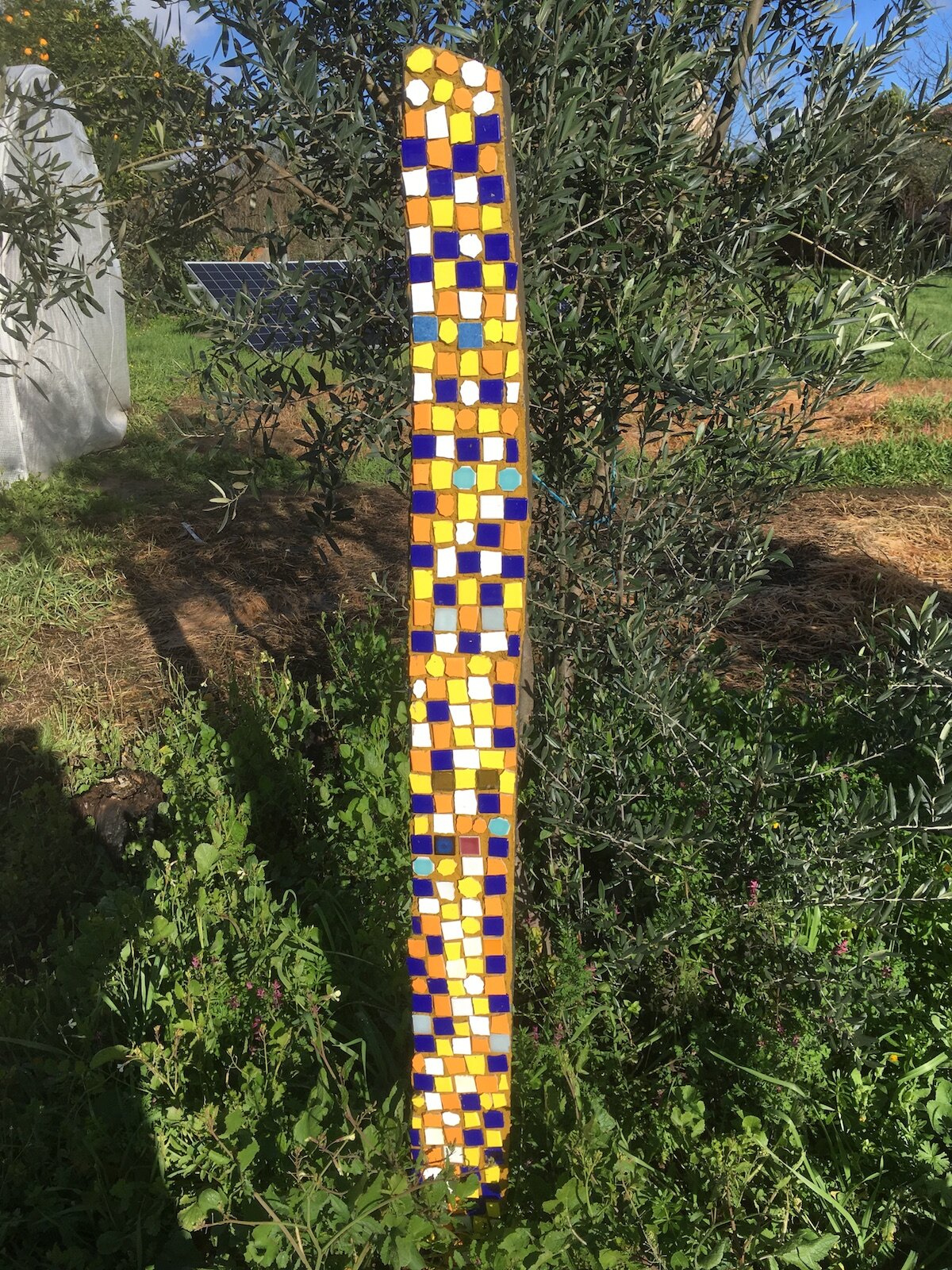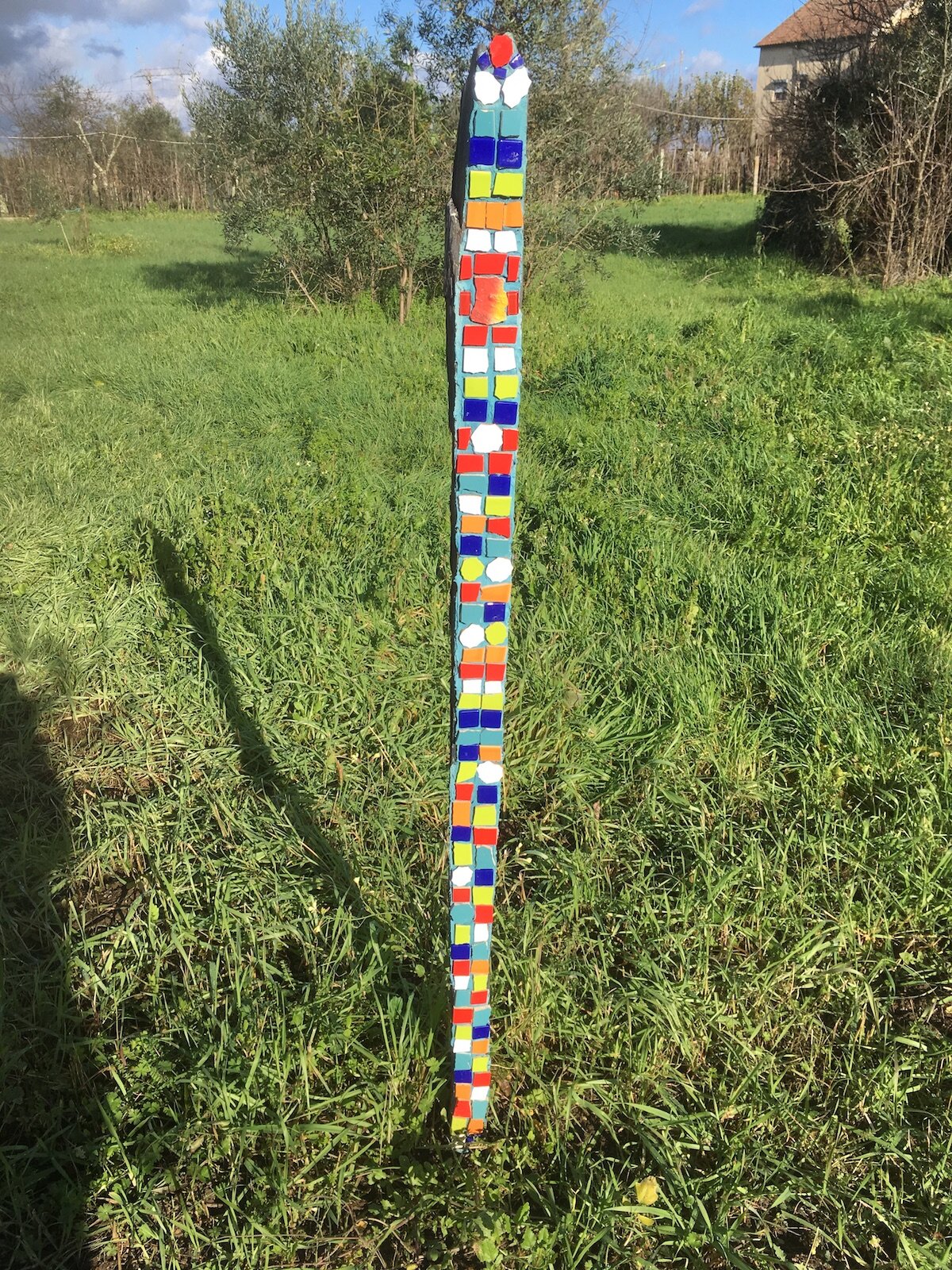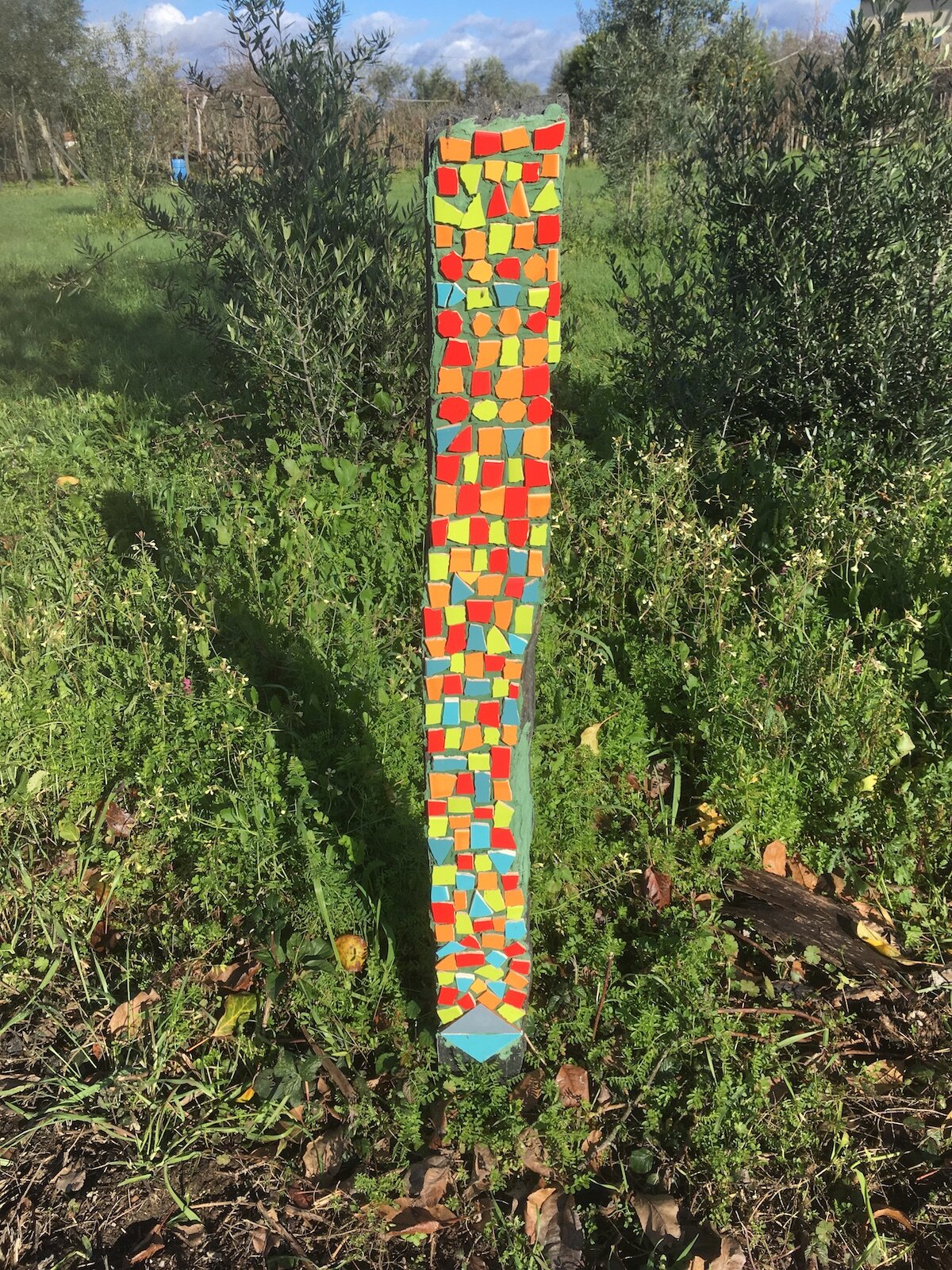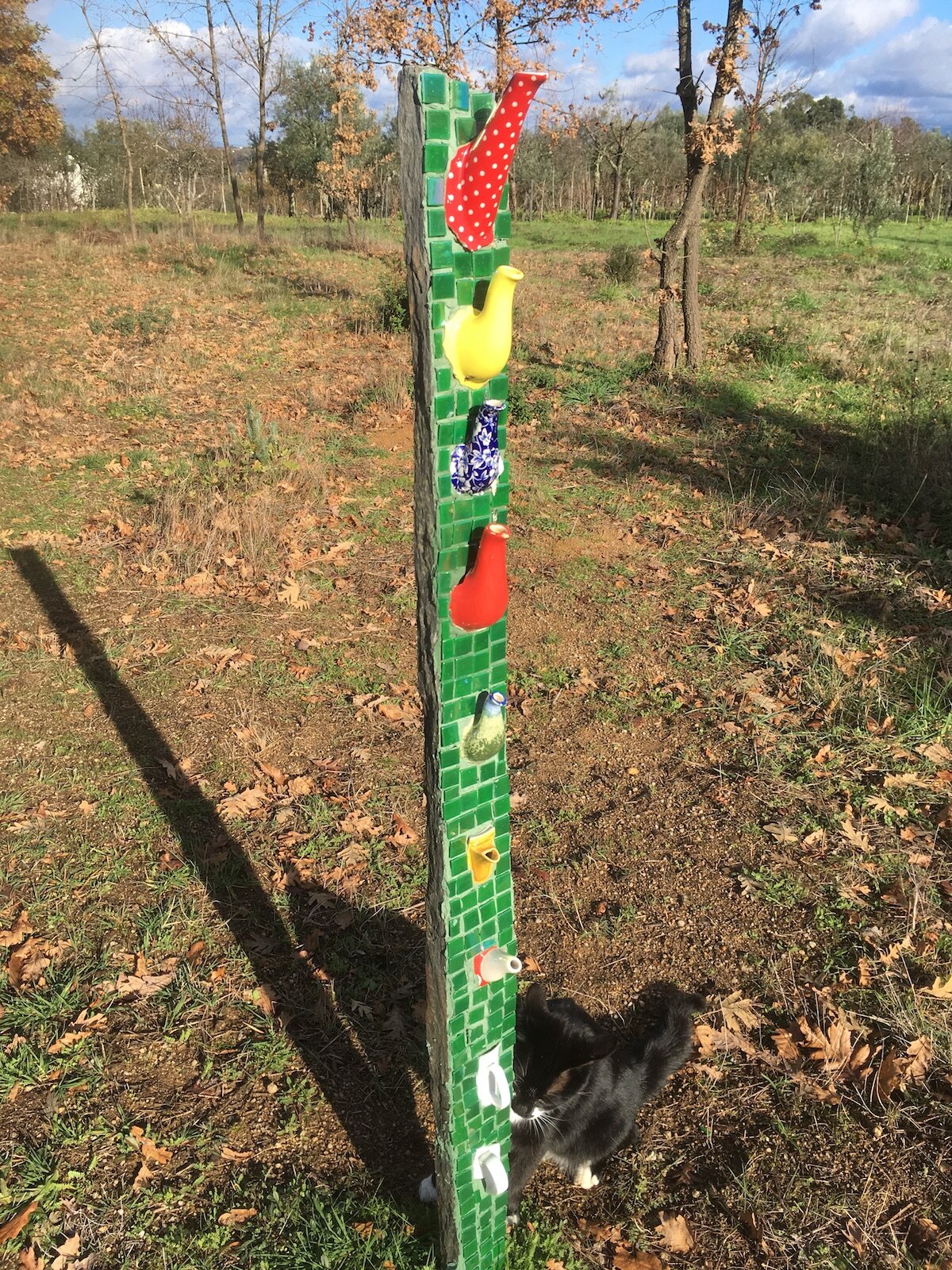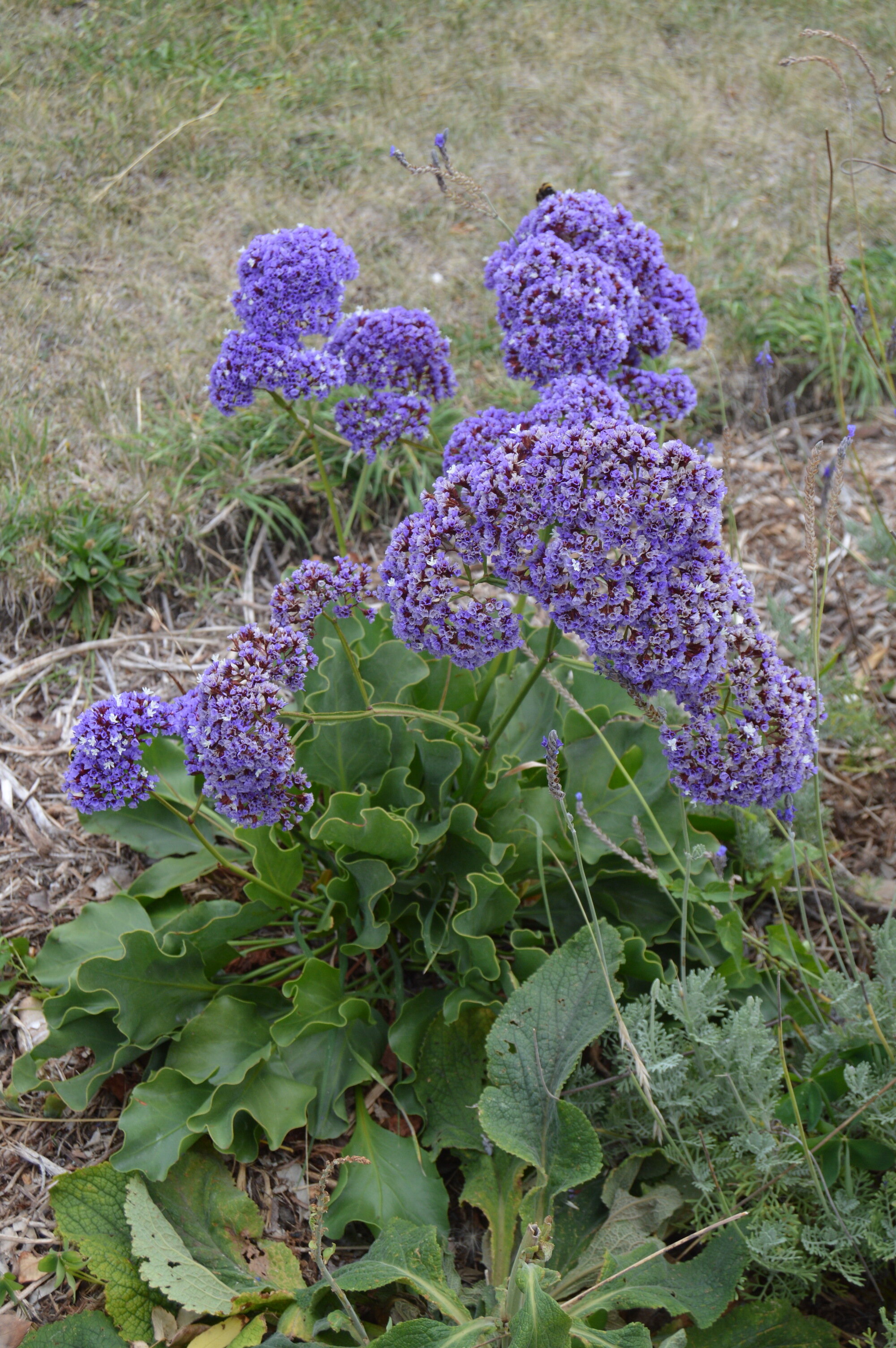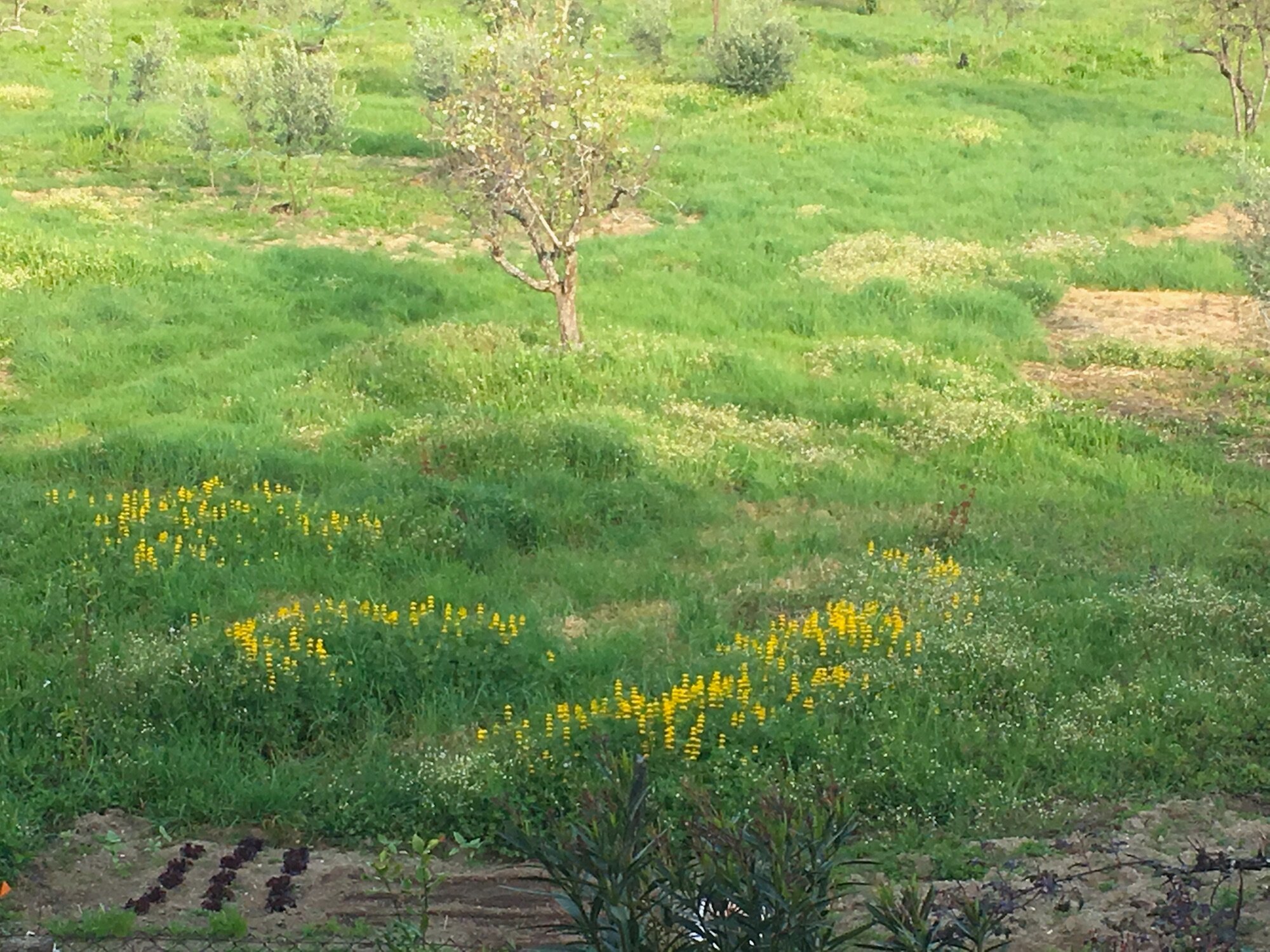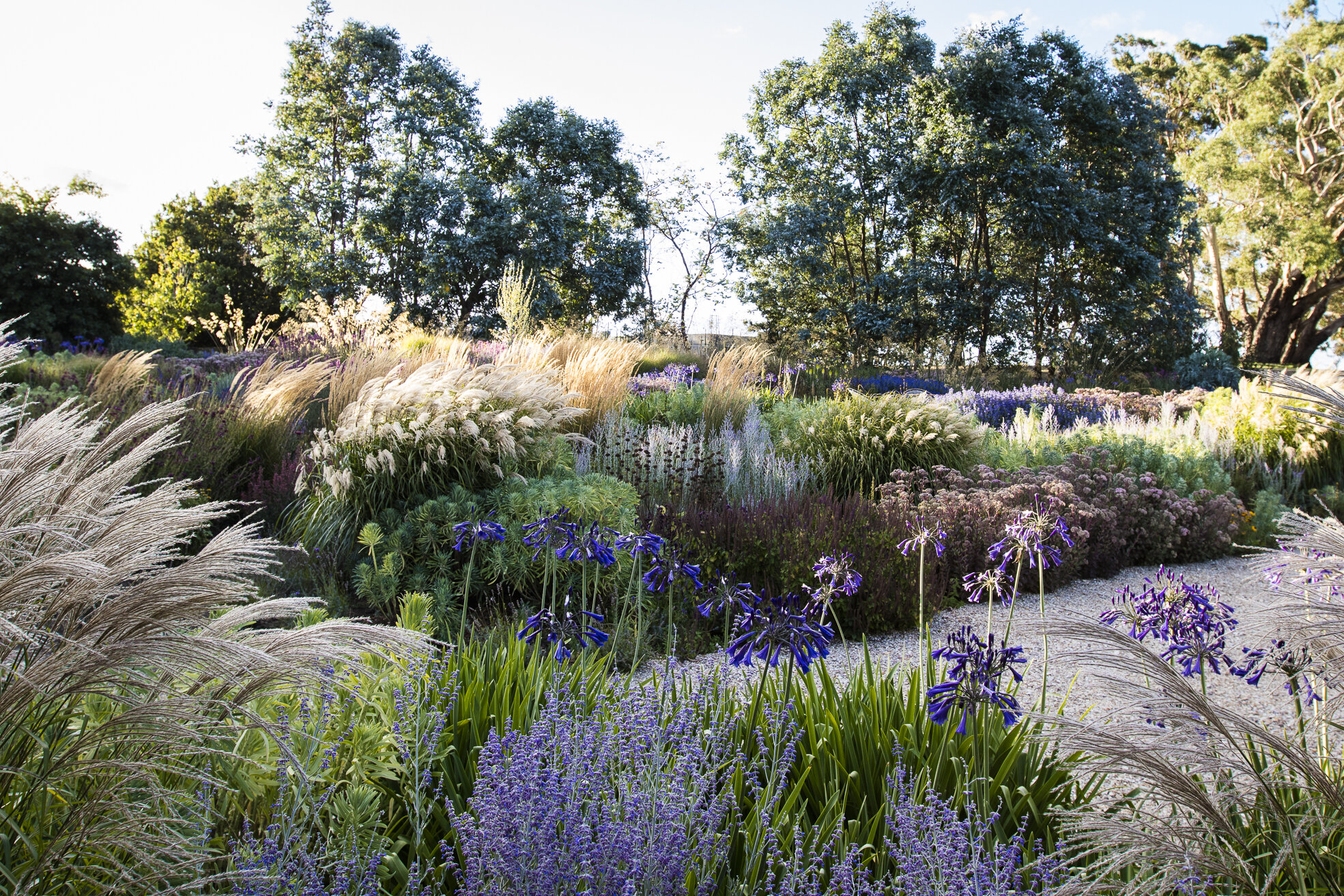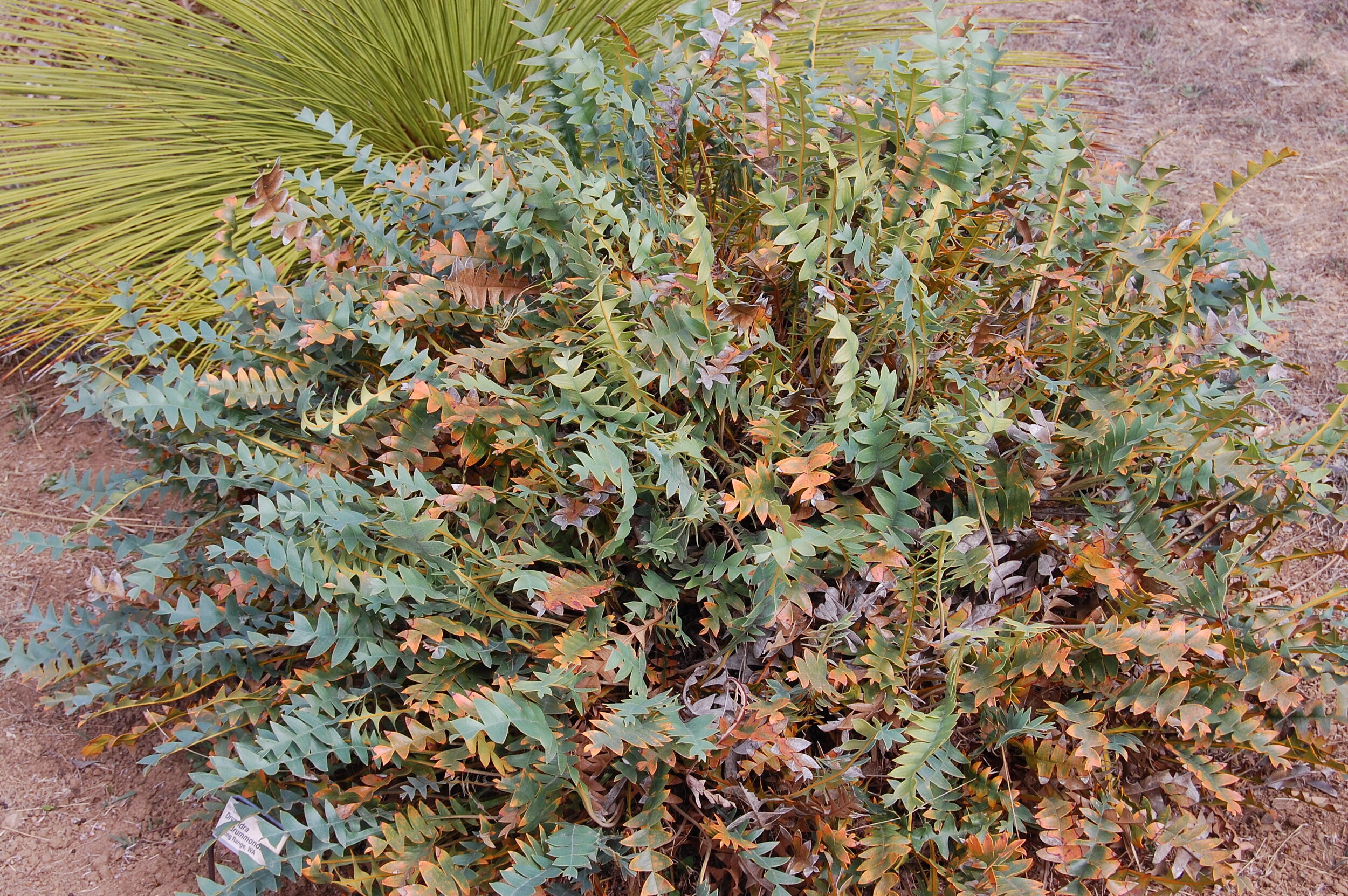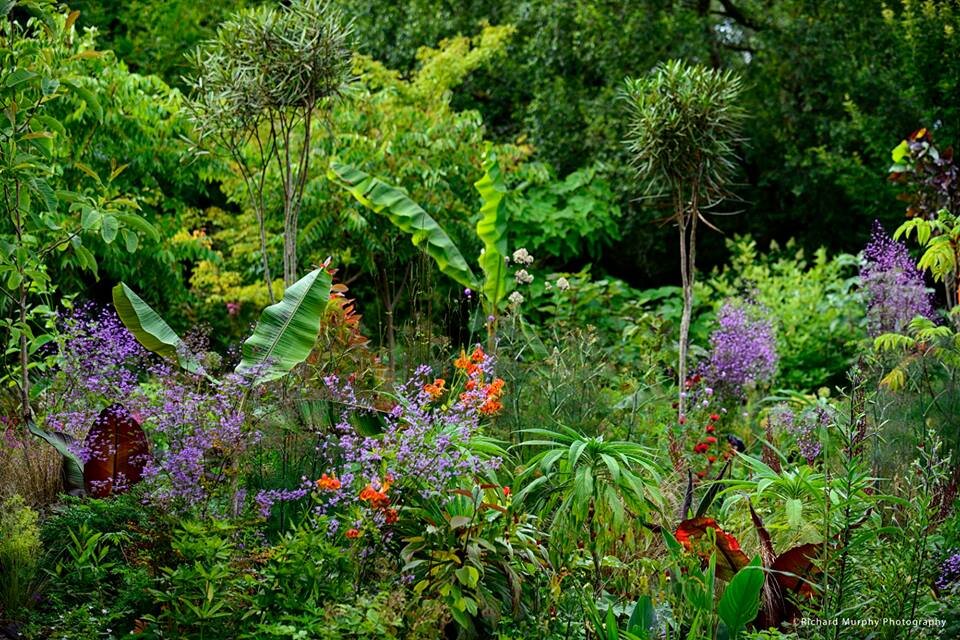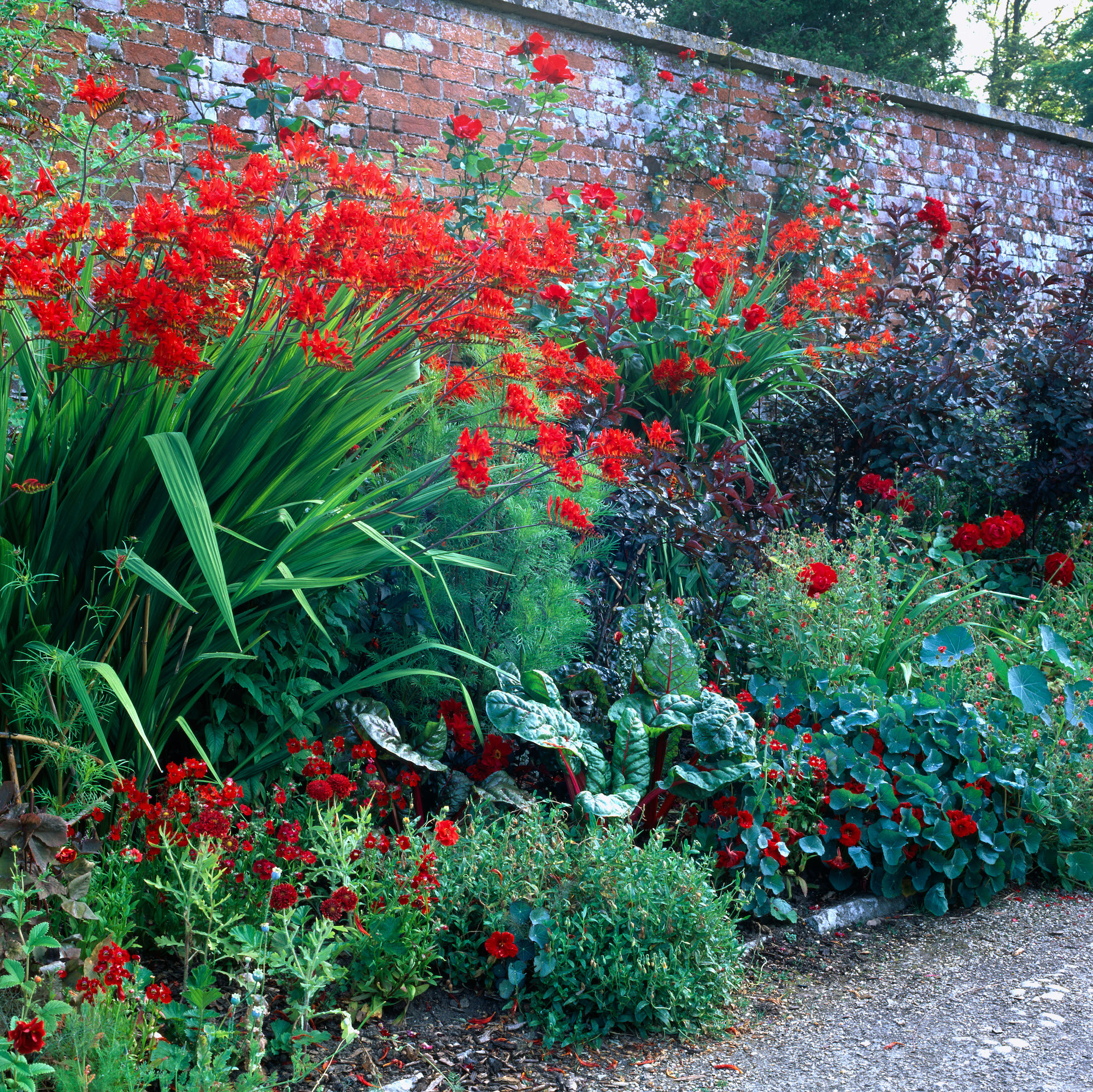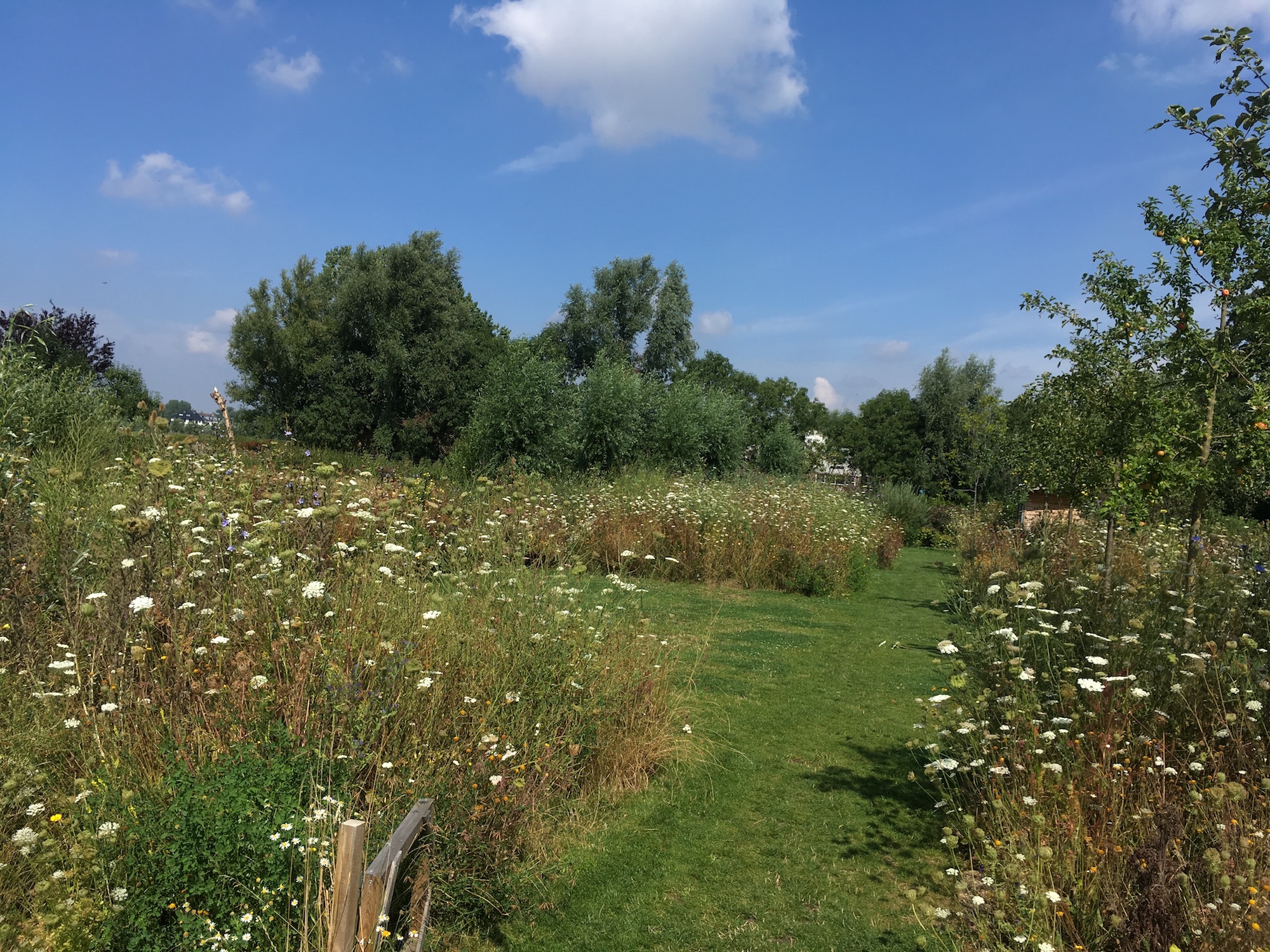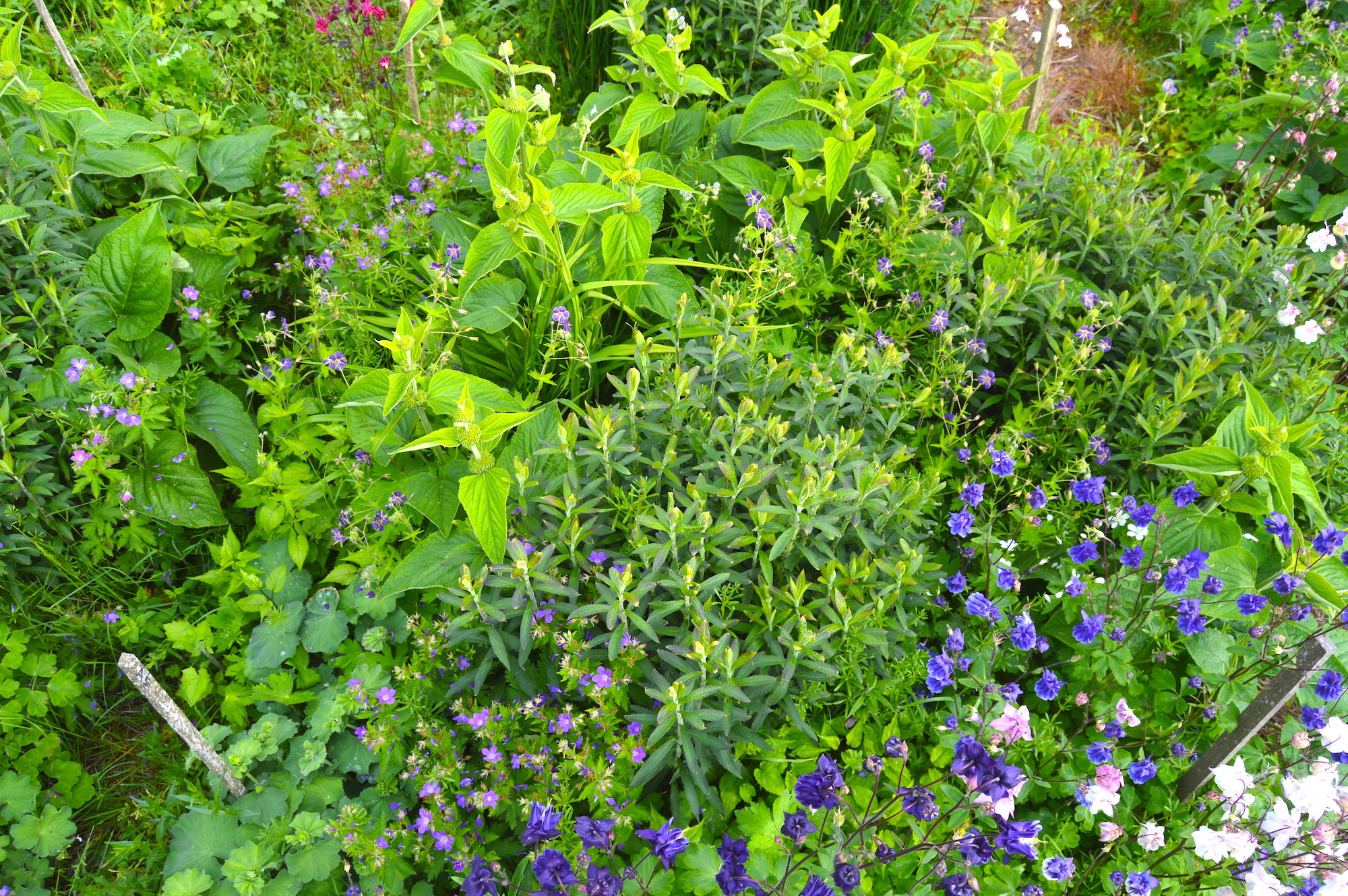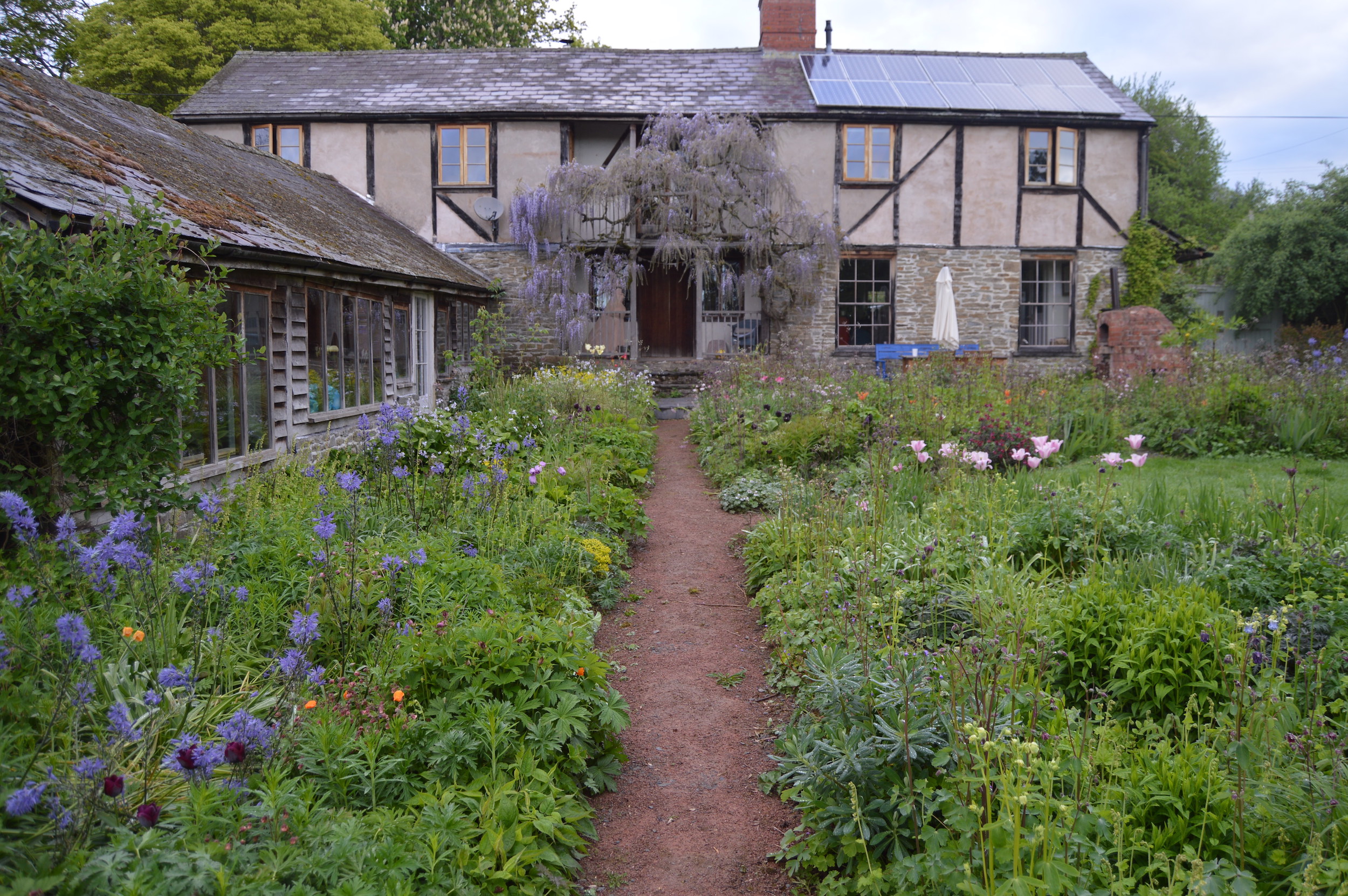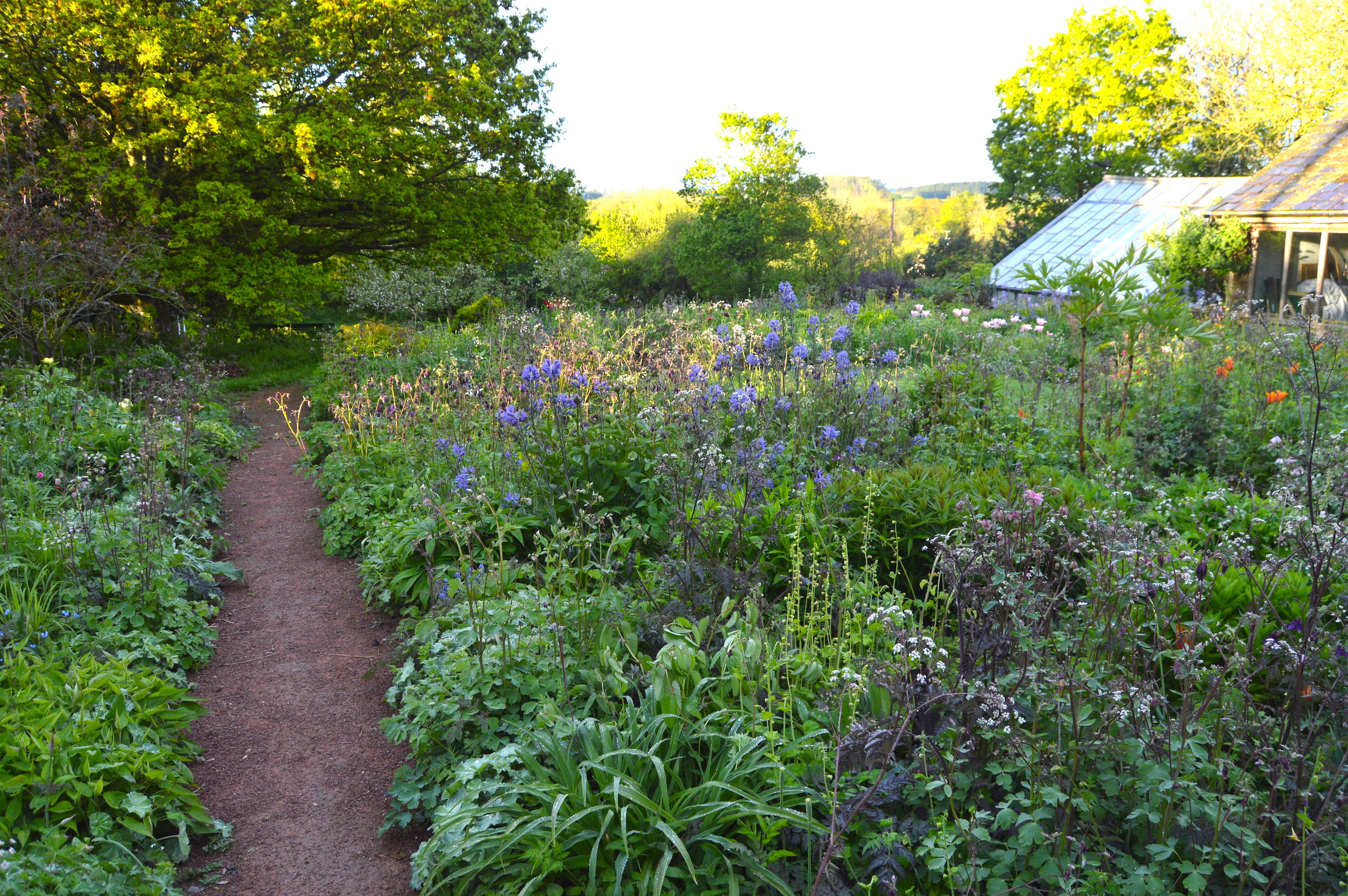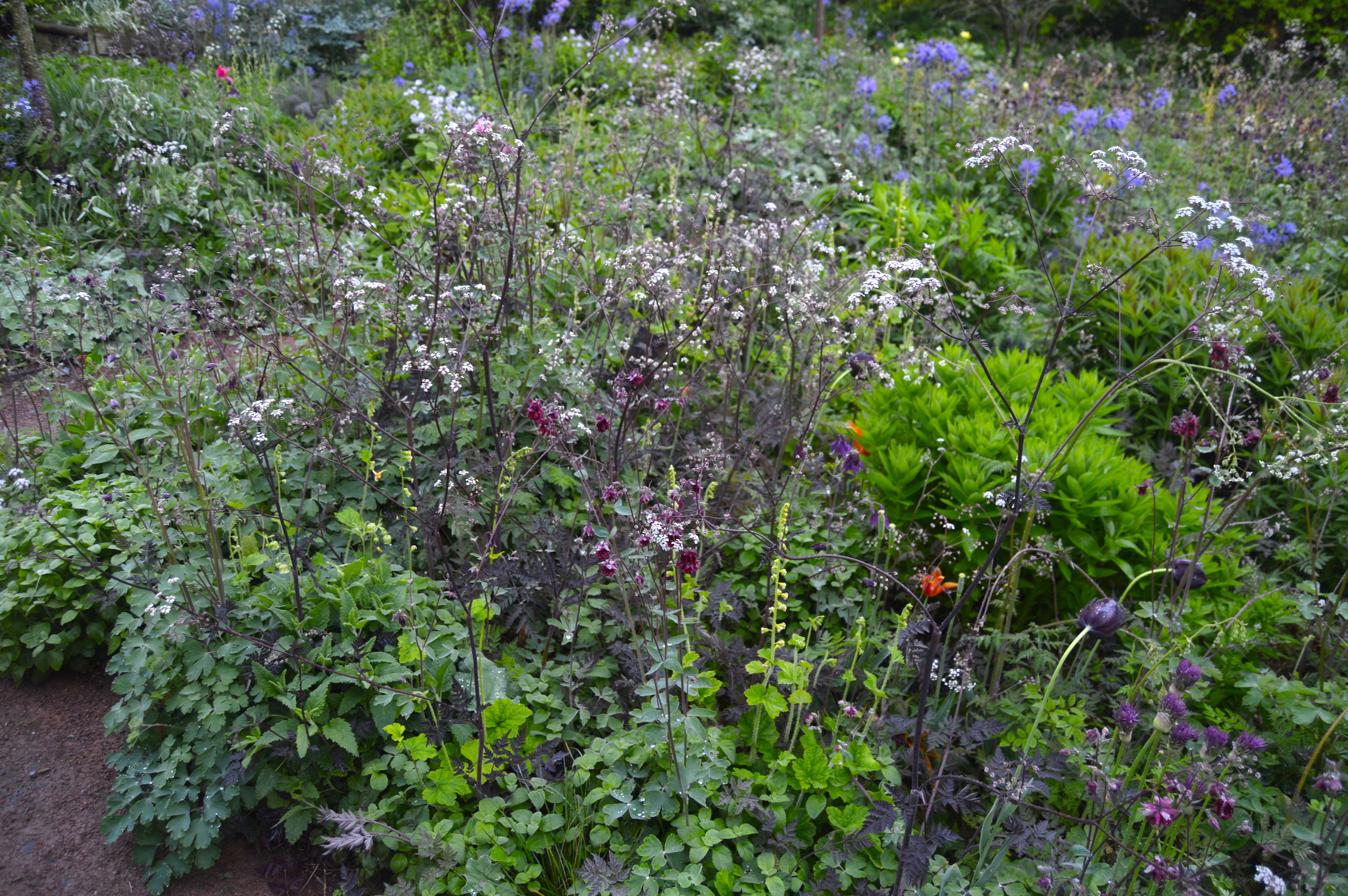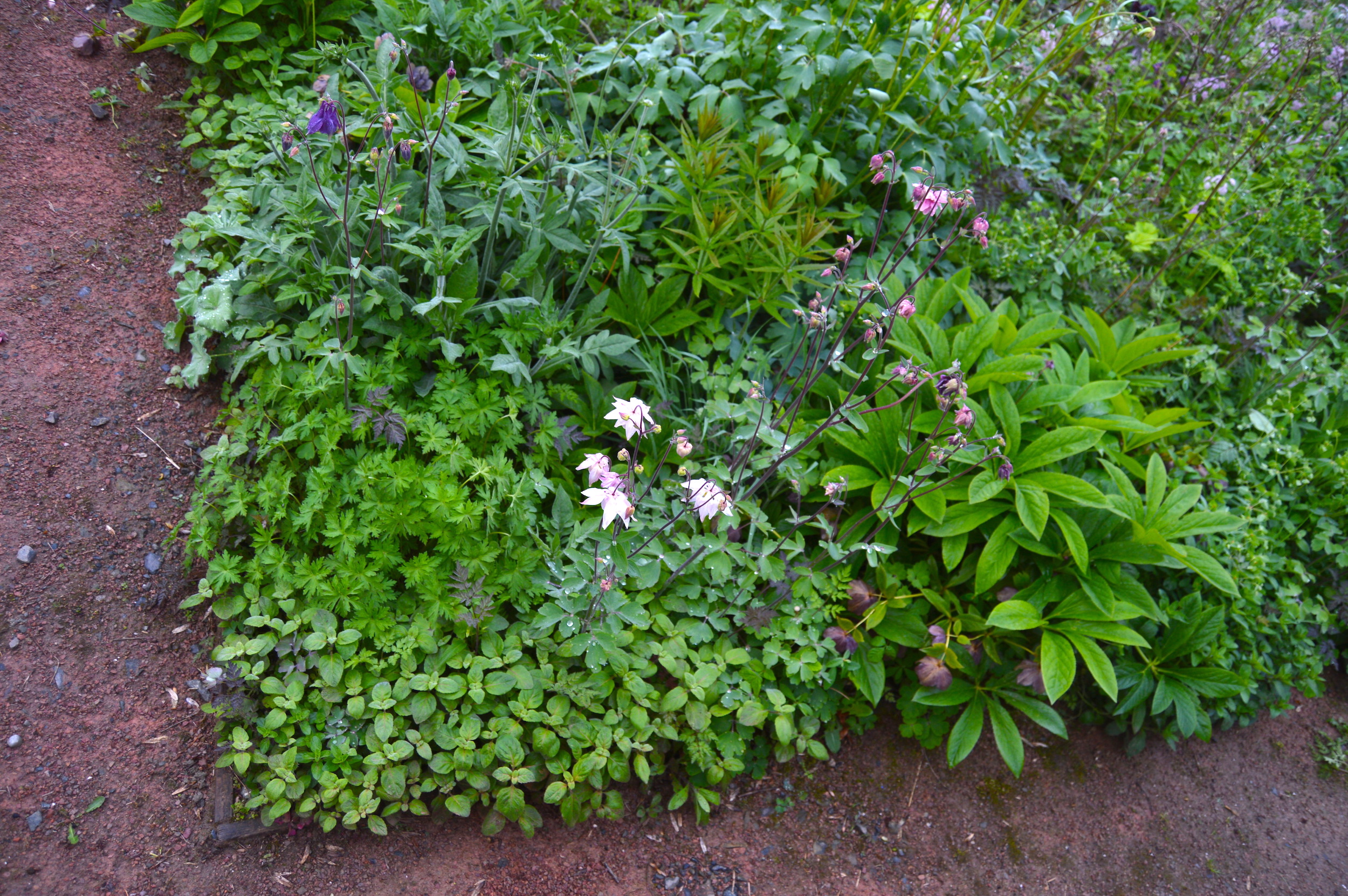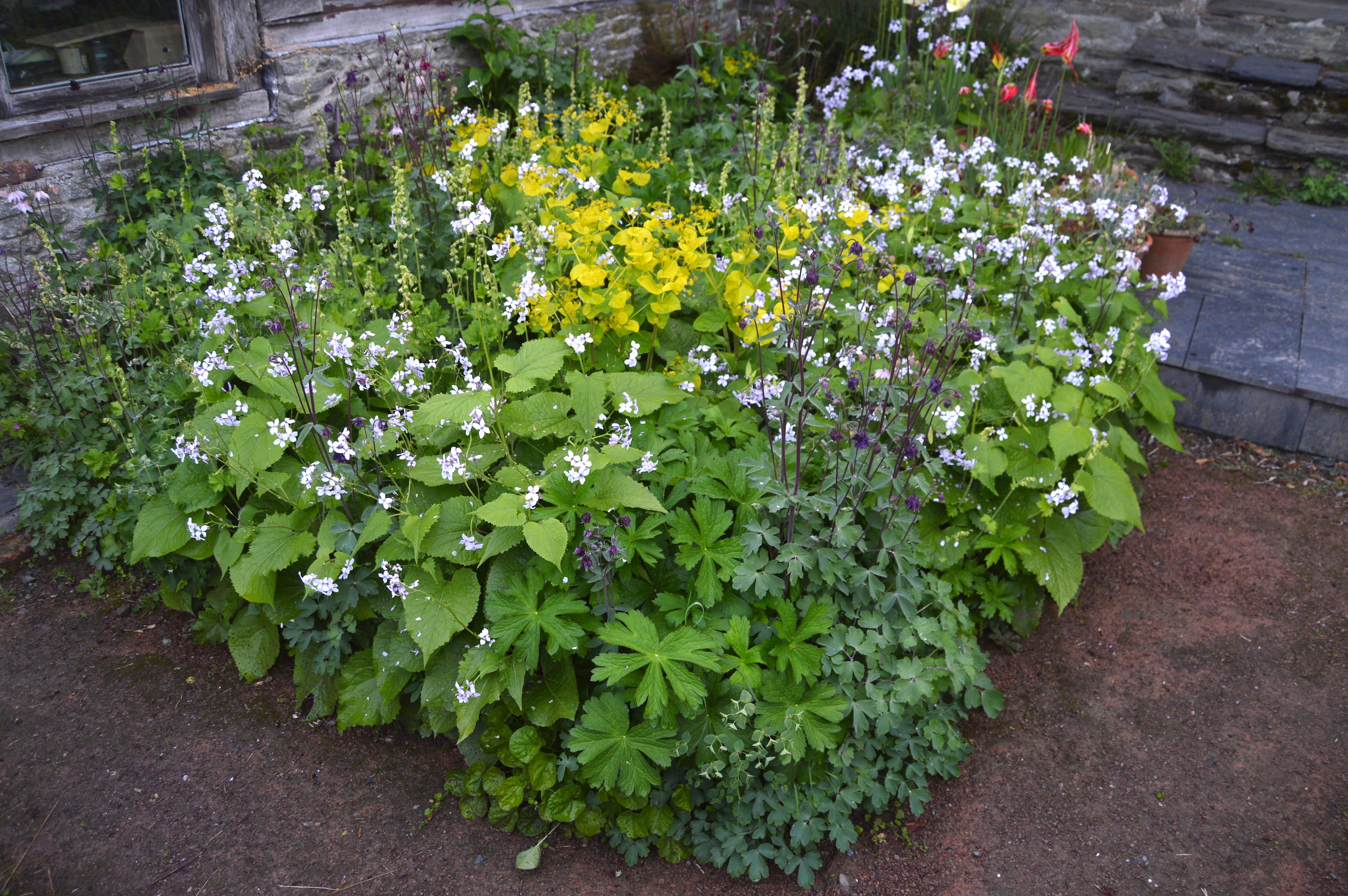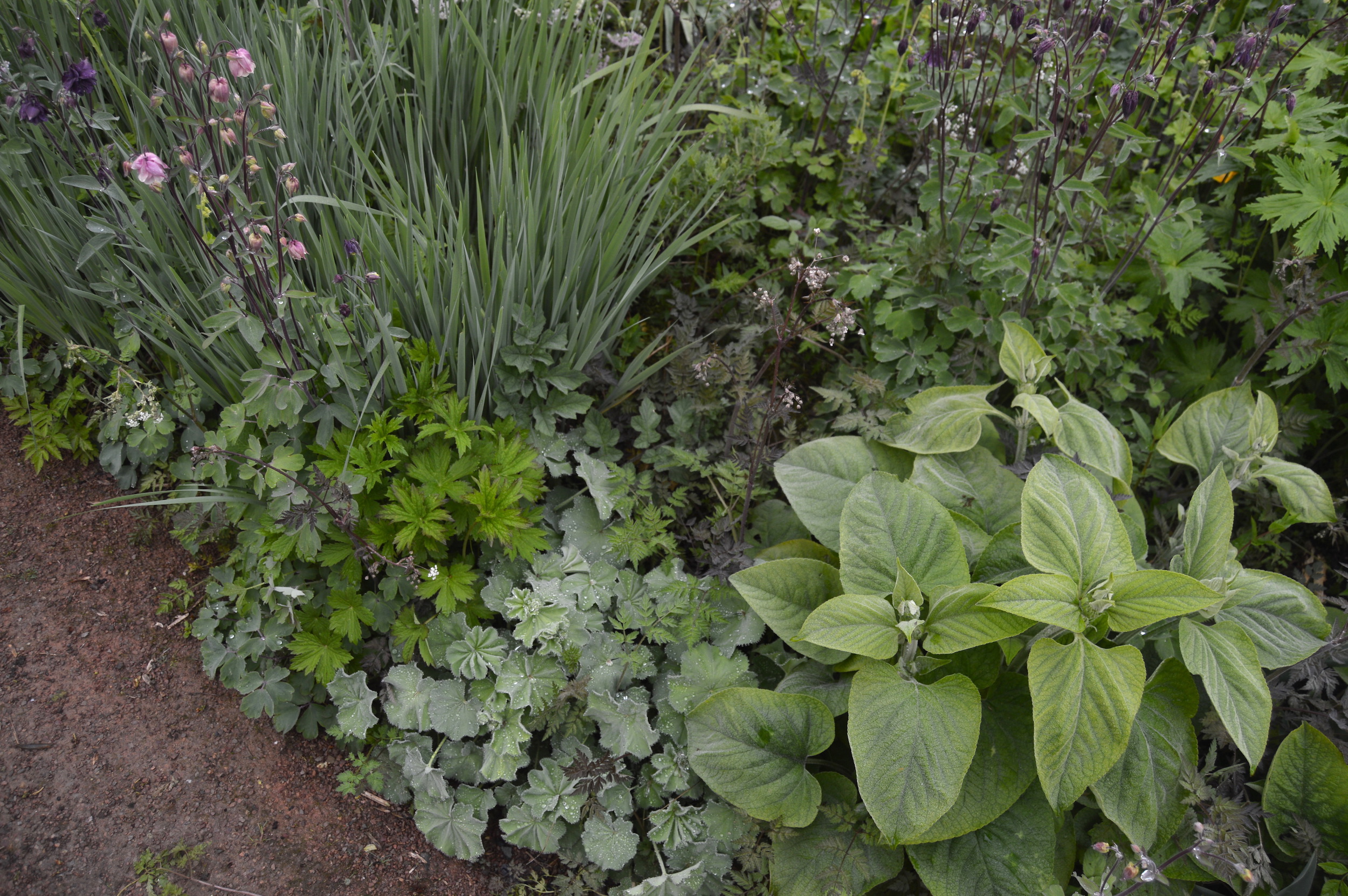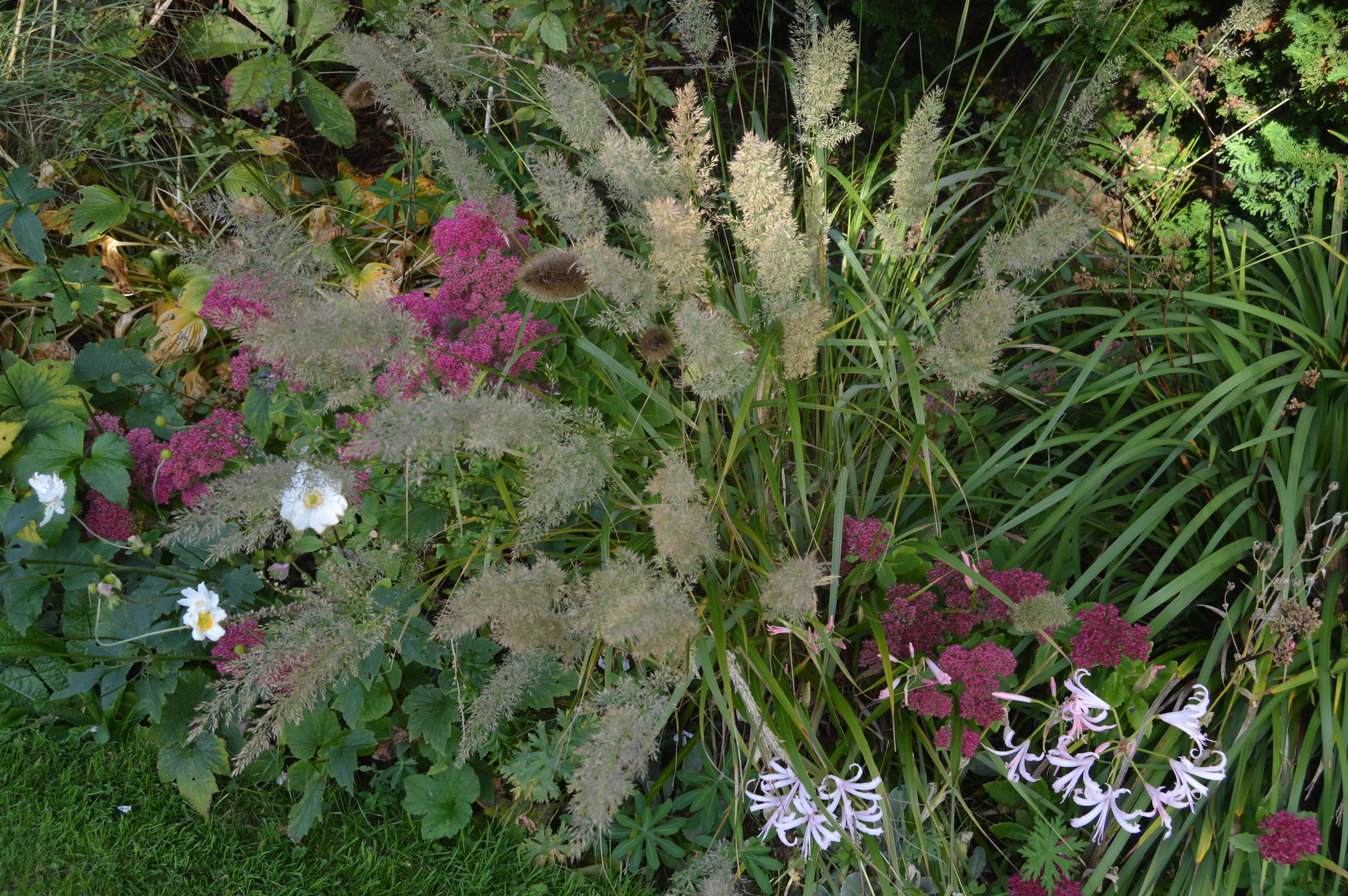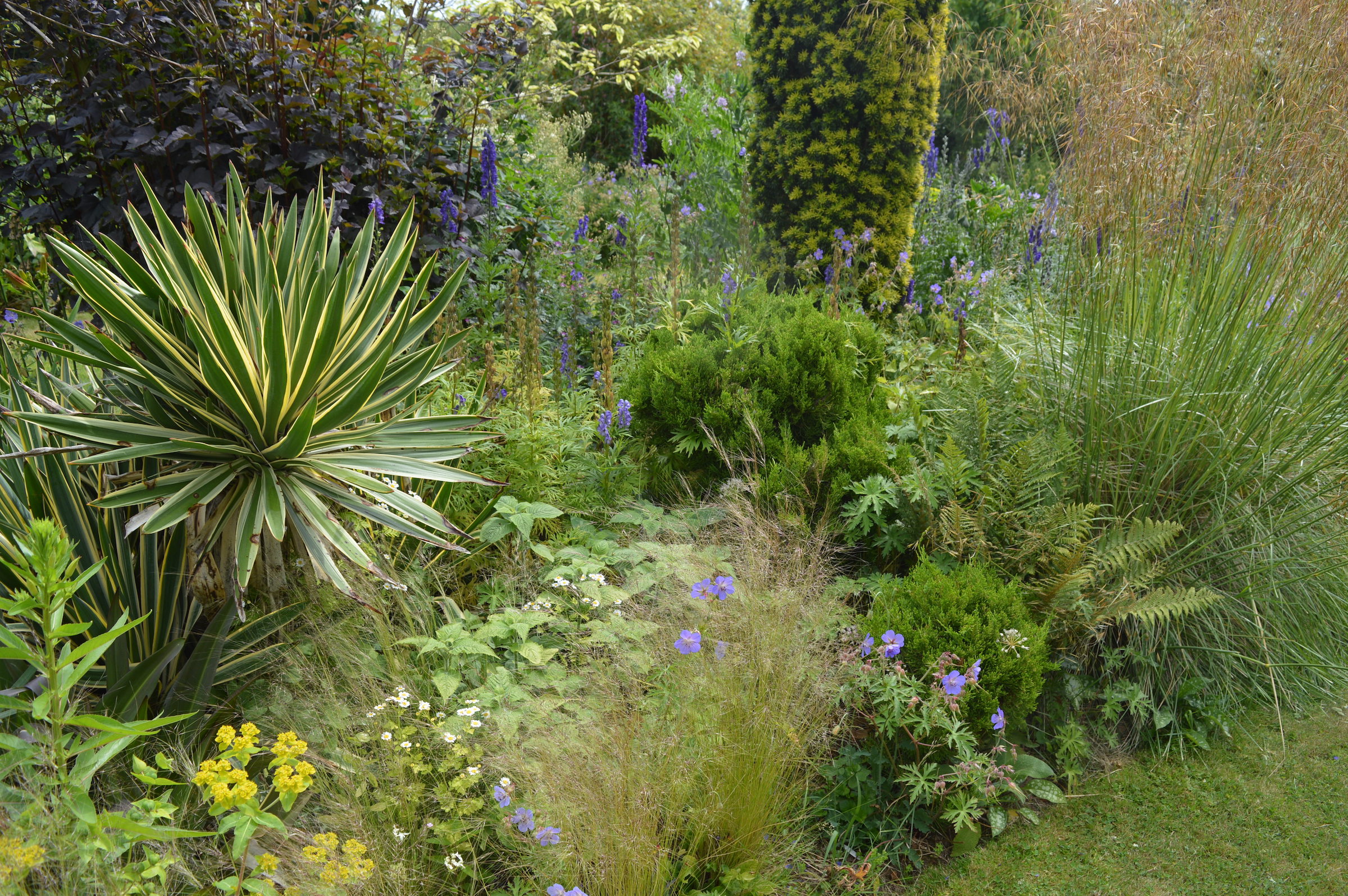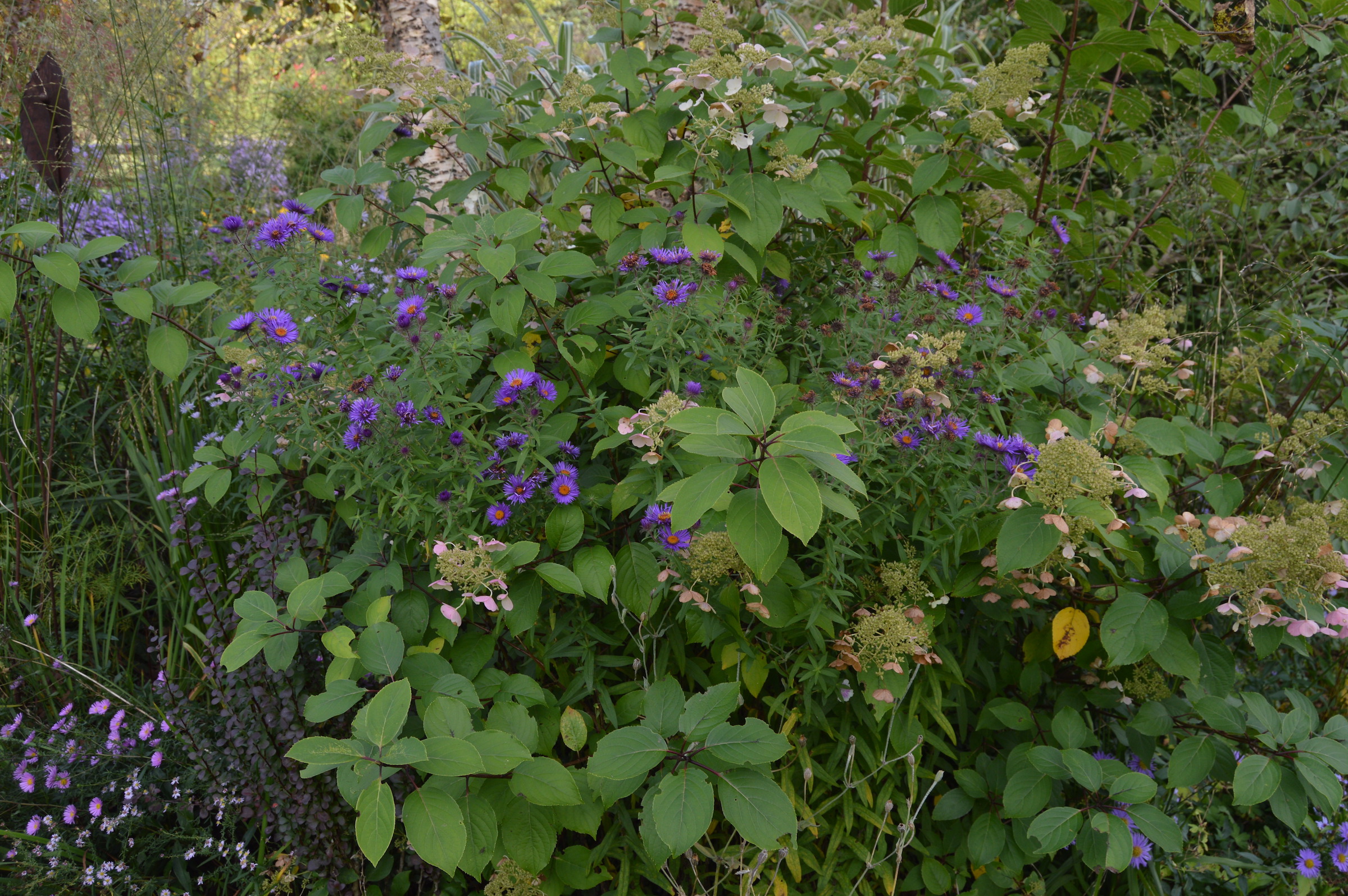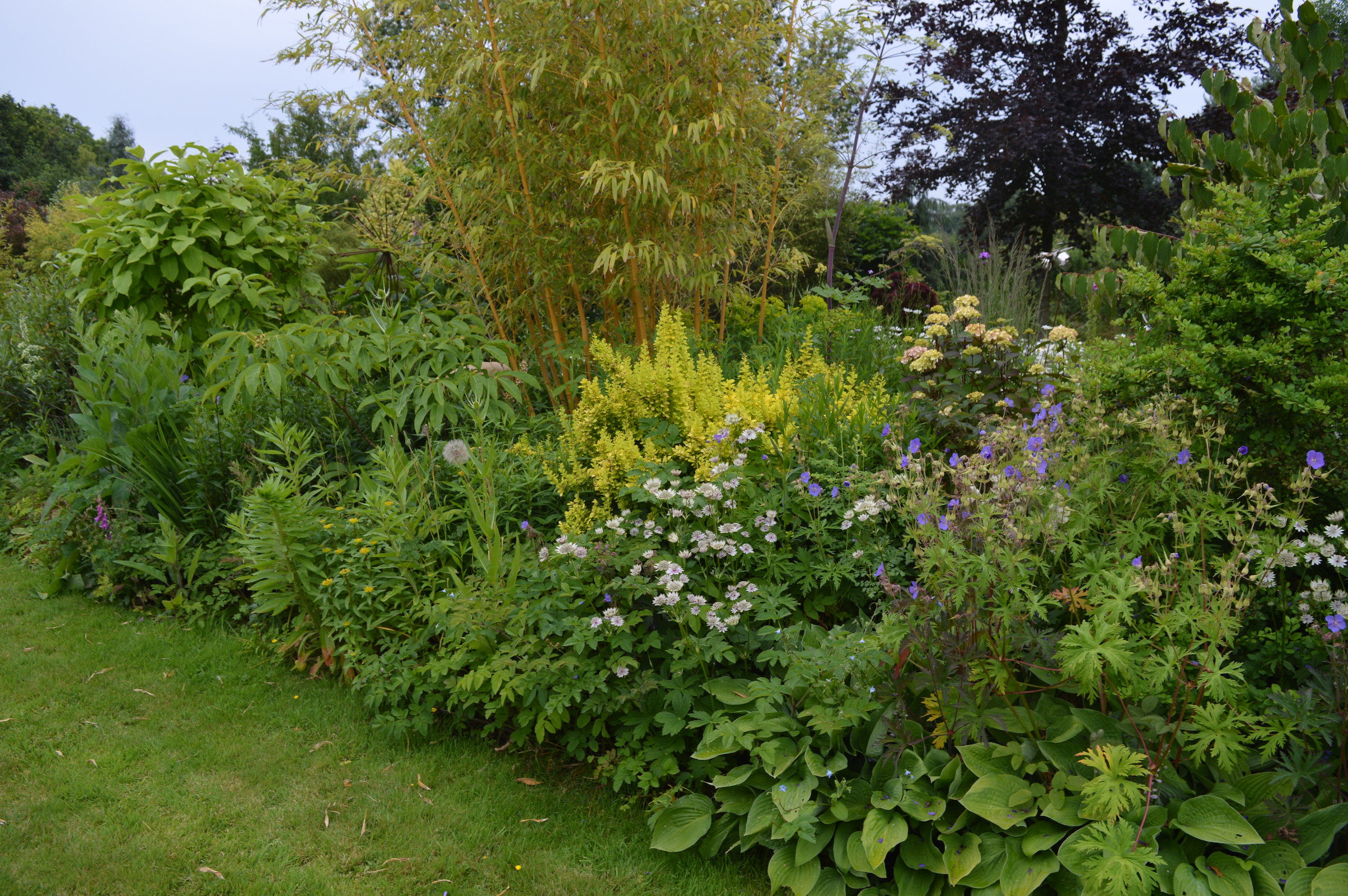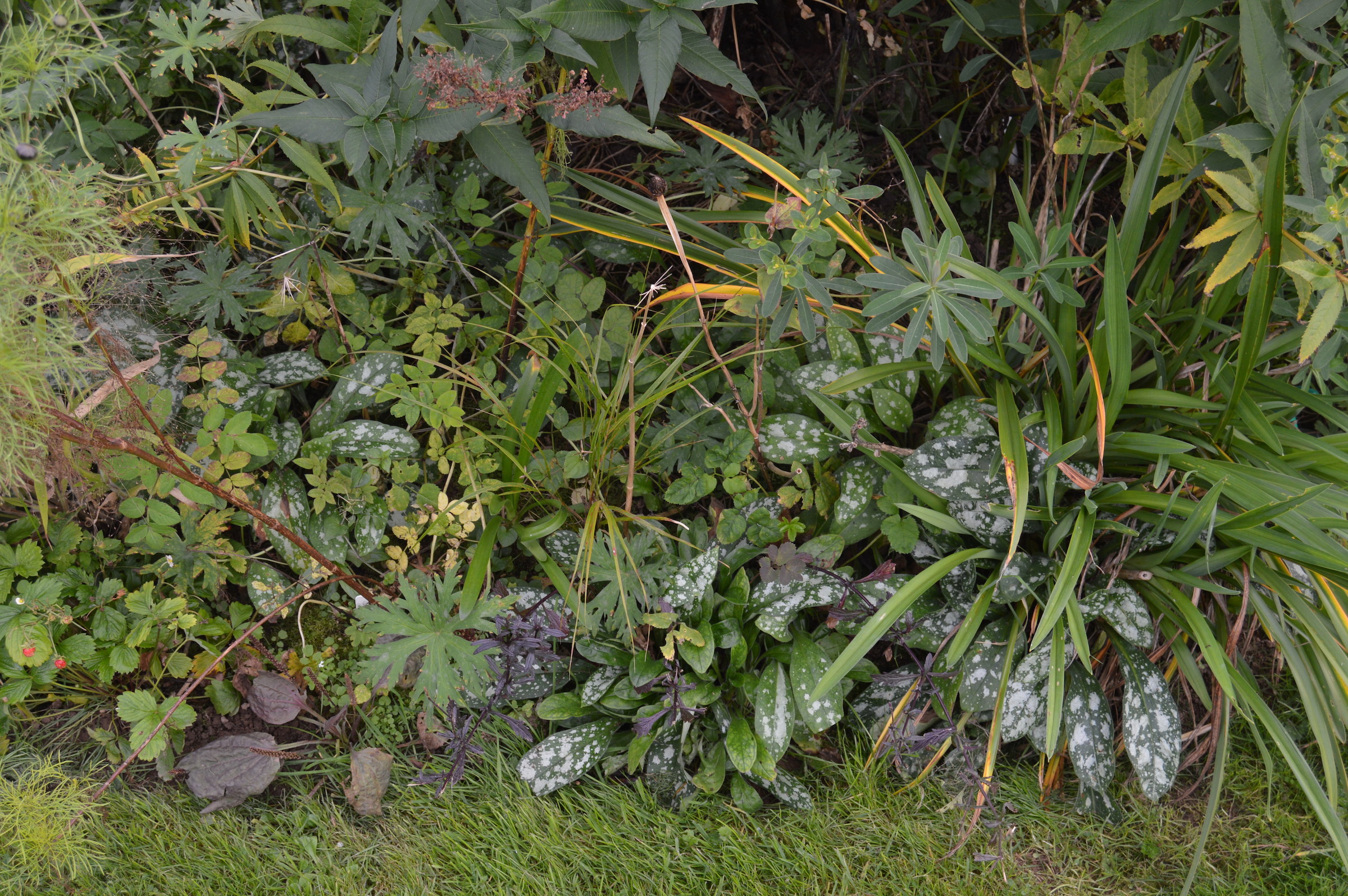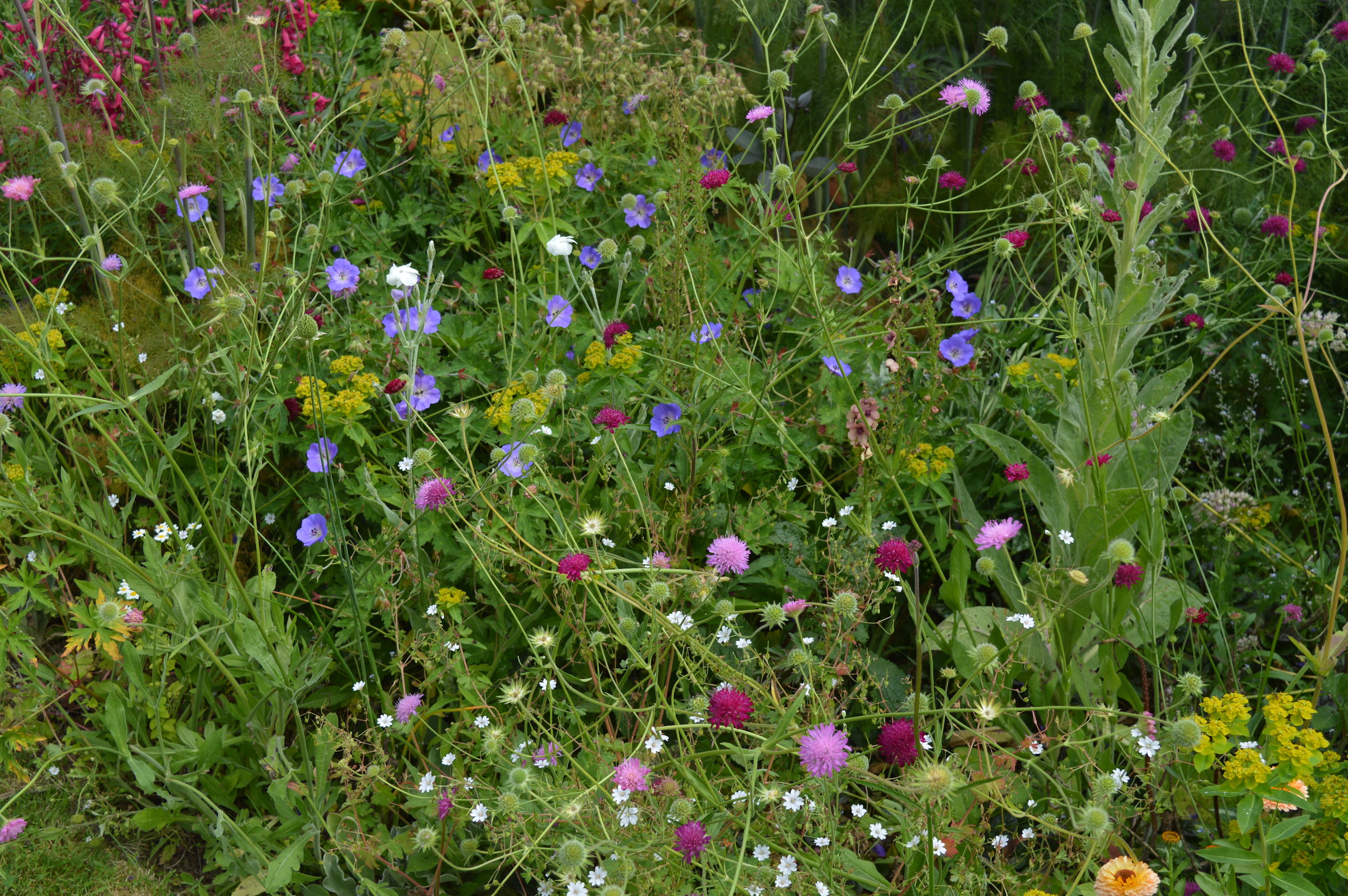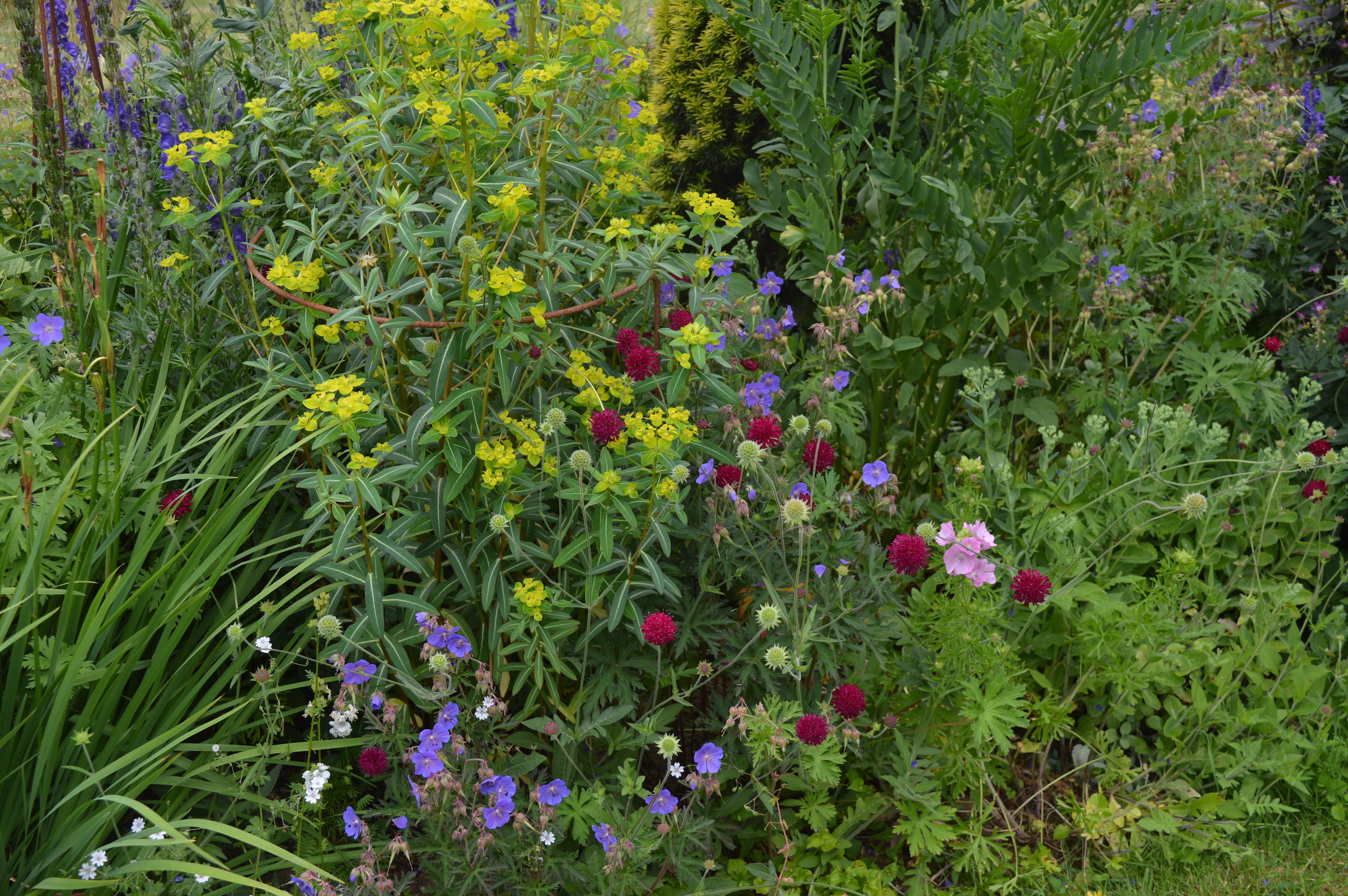You can probably guess why I haven't posted for a long while. I have been busy. In fact this has been one of the most productive and intense periods of my professional life.
March 12th
A friend, Francisca, comes round for supper. She's involved in a botanical survey in the region (Beira Alta, inland central Portugal). We talk about the increasing worries over the covid disease and about her staying out here rather than going back home to Lisbon.
My friend Malgosia is supposed to be flying out from Poland, via friends in Madrid, in a weeks's time to help me plant up several hundred young plants. I begin to worry she may not come.
March 19th
We've driven down to the Algarve to see an English friend, Judy, for her birthday. Her family has had a house here for many, many years, long before the area got fashionable and so developed. A different world to the ascetic granite boulder littered landscape of Beira where we live. Gardens burst with plants, including Judy's, and I discuss with her about taking lots of cuttings the next morning to help stock our plot. A much more developed garden culture here. Much watching of news re. this health crisis.
March 20th
The Portuguese government are about to launch a lockdown with no movement allowed. So we decide to cut short out trip and get home ASAP. Ideas of ransacking Judy's garden for cuttings abandoned, with only one Pelargonium in the bag. Another on some waste ground near a petrol station is the only other one I can get my hands on. Jo and I spend the night in a layby north of Lisbon in the camper van.
March 21st
Annie Guilfoyle, with whom I run Garden Masterclass, and I discuss what we are going to do about our painstakingly worked out programme of events. We decide to start working out way through sequentially, rescheduling them to the autumn. People can ask for a refund, but in the event few do, which is just as well, as we have to pay quite a bit to the ticketing website and the online bank for every payment handled.
No Malgosia. It is also looking doubtful if my plannted trip to England in mid April will happen either. Oh well, that will give me more time to plant out those hundreds of seedlings that clearly no-one is going to help with now.
March 25th
We're very glad we are in Portugal. The government has acted quickly. The population have been sensible. There's toilet roll in the shops. The local garden centre is open, to limited numbers of people. Meanwhile, Britain appears to be in chaos, the government slow, clueless, the leadership bluffing. It later turns out that all the UK government pandemic planning was put on the back burner because of the need to “make Brexit happen”. Over the next few weeks, we become increasingly ashamed of our country, as the sheer incompetence of our politicians becomes apparent.
March 31st
Annie and I post a little chat between us on You Tube. Things have moved so much since then I cannot for the life of me remember what we said. I think we probably rambled on about what our Garden Masterclass business was and how we were going to try and do some stuff online, and we were not going to let our public down. Financially speaking, we are also really frightened of the consequences of mass refunding of tickets.
I vaguely recall some flanneling around. We agreed to do some webinars, and a good place to start might be doing something with Nigel Dunnett. Nigel is always up for it. He's great at publicity and explaining planting design. I send Nigel an email.
April 2nd
Jo helps me plant out seedlings, which since she is older than me finds the kneeling and getting up and down difficult. Very relieved when I decide we should stop halfway along a fairly sizeable sprayed off area of ground and put some in the garden where the soil is easier. The soil is very light, and amazingly easy to work. The seedlings in question are all 25mm plugs, tiny in other words. I sowed them in mid October, the autumn being when most Mediterranean region plants germinate. A lot are still really tiny, but I don't feel too worried as the weeds here are mostly annual and the soil so light they pull out or hoe off really easily.
April 7th
Nigel Dunnett and I do our webinar - a video about our gardens: his current one in Yorkshire, and my old one, in Herefordshire. I then have to publish it, on You Tube, but first I have to stitch together our images with our audio. I've never done video editing, and so I haven't got a clue what I'm doing. I seem to recall a long night trying to attach powerpoint images of Nigel's garden to our audio dialogue, and then to do the same with mine. I fluff something up, and lose a whole chunk of my commentary, so my garden loses out a bit. Damn! Oh well, tough, plough on.
Meanwhile I've had an idea. Rather than a string of webinars organised on the hoof, why not do a daily 'broadcast'. Everyone's at home - frustrated, bored, and quite often frightened. Between us, Annie and I know loads of people in the garden world. They're all at home too. With Zoom, we could interview them, get them to show some pictures, and we'd help keep the gardening and landscape community get through this strangest of times.
I mention to Annie, “nice idea, once a week” she said. “No, every day”. We agree on Monday to Friday. We agree that we should cast the net wide. We will ask the gardening 'celebs' we know, as well as nursery people, working gardeners, amateur growers. We later get complemented on our “egalitarian and non-hierarchical” approach. Which is lovely!
April 8th
Our first 'Tea Garden Talk' goes out with photographer Claire Takacs, who shows some stunning pictures as she talks about her work. I manage to upload to You Tube without too much trouble.
April 9th
Our second, with Juliet Roberts, former editor of Gardens Illustrated as our guest. An interview, no pictures, simple.
April 10th
Annie has an interview organised with her friend Mauro Crescini, who runs the Valfredda nursery near Brescia in Italy. Mauro is very involved with the Bergamo Landscape conference every September, a wonderful and increasingly important event. But right in the middle of the covid virus epidemic in northern Italy. We have harrowing emails from him describing ambulances all the time, day and night, every town and village losing so many, mostly older people.
April 17th
Over the last week, we've had Jimi Blake doing a wonderful tour around his spring garden. Jimi is completely dependent on visitors to his garden and workshops for his livelihood, so we are particularly keen to give him a hand. Jimi is not particularly techie though he has a good steady hand on his camera-phone. I said I'd stitch his videos together. I google 'free video editing software', download something which seems to be idiot-proof and get stuck in. Half an hour later, I jettison it, as I cannot work out how to do the simplest thing. Download another, get somewhere, learn the basics, but then something happens and I can't save it, look up instructions, watch a You Tube video on how to do it, get nowhere. Jettison that too. And so on. By the time I get to my fourth application I am practically in tears. But this one looks good, a nice combination of being intuitive and sophisticated. Great! Save film, then realise there is a socking great watermark across the middle of every image, so I fork out $50 to buy it. Money well spent. Thank you Filmora. I'll happily promote you. I have continued to use it.
Tom Stuart-Smith is our next guest. Some nice videos of the garden. Some drone footage. I fluff playing them while he talks live. But we get good numbers, and let's face it, everyone is watching dodgy videos at the moment, so we are all in the same boat.
April 21st
This was the day I was supposed to be taking a group of Garden Masterclass students around Keith Wiley's Wildside garden, and Holbrook Gardens, also in Devon. The previous day I was supposed to have picked up Elita Acosta at Bristol airport. Elita edits Verdeesvida (Green is Life), a quarterly garden magazine published in Madrid. Elita has been a tireless supporter of naturalistic planting and I wanted her to come to England to see some gardens and meet some people. But of course, I'm in Portugal, and Elita in Madrid, where things have got very scary. Her husband is a doctor, treating covid patients. He won't get a day off in weeks.
Meanwhile Tea Garden Talk has taken off. Annie and I sort of take turns booking people. We spend a lot of time on WhatsApp talking through what we are doing. In theory I suppose we discuss all decisions before committing. In practice we don't, but it doesn't seem to matter, as we really seem to think alike, and I think we have implicit trust in each other's judgement. Even though she is a dog person and I am cat person.
Today's TGT is with Claudia West, the very engaging and enthusiastic planting designer who wrote Planting a Post-Wild World with her business partner, Thomas Rainer. Except that no-one gets to see her fabulous smile because of the poor broadband connection to her Pennsylvania farmhouse. So far, so lucky with my broadband connection, which is with MEO, the Portuguese telecoms company we have so often cursed for the weeks we have spent without a connection. I dread losing my connection, more than the virus. By the end of all this however, I'm composing an email in Portuguese to the local office manager to thank them for their flawless service, as every day I download and upload gigabytes of data, and never once have I had to complain.
May 5th
Today's TGT was a lovely tour around Hestercombe, a historic garden in Somerset. Claire Greenslade, the Head Gardener, took a good half hour of video footage on her phone with a commentary, she's got a beautiful voice, and a good steady hand (oh how I am appreciating people with a steady hand on their phones!) but I curse myself for not having briefed her to hold the phone landscape fashion, not portrait, so the image is surrounded on both sides with a sort of grey fuzz, like footage of Middle Eastern wars on Al-Jazeera. But still, it's lovely, and green, and peaceful, and English, and I really felt like I had had a good and informative tour round.
By now, Annie and I are beginning to recognise our 'regulars'. They are in Amsterdam, in Chile, in Germany, Spain, Italy, Britain of course, and Ireland. A lot in Ireland, and indeed a feeling I am left with is just what a great gardening scene Ireland is developing. Before the 'broadcast' we exchange a bit of banter with those we recognise. Increasingly it feels like we are really building a community.
May 15th
A Friday, and the last TGT of the week. A slight feeling I might have overreached myself. So far we have just had one person to interview every time. This time we have a panel of four: one in Lodz, two in Vilnius and one in Kiev. Yes, that's right. Am I mad? I clearly have delusions of being a TV producer. Annie doesn't stop me, but I like to think if I proposed something really mad she would. You would do, wouldn't you Annie?
I am determined to do something about the post-communist gardening boom in eastern Europe. It's a part of the world I know well, ever since Jo had a job in Bratislava in the early years of Slovak independence. I pin down three women I know, all of them real innovators, and we agree dates, subject matter, and how they are to send me their images, we do a test the day before, with Victoria in Kiev in a black leather jacket actually driving as we did this. I want to include my friend Malgosia too – her family had greenhouses during the communist era in Poland and provided the little luxuries that meant so much to people in hard times: cut flowers, tomatoes, cucumbers. We pre-recorded her, which takes time editing, but makes it much less stressful on the day, which goes remarkably smoothly.
May 19th
Annie has gone out on a limb and invited Matt Rader, the President of the Pennsylvania Horticultural Society to be our guest. A week previously we had had the society's Head of Horticulture, Andrew Bunting, talking about the society and his latest garden make-over. A bit of a feeling that the State of Pennsylvania is getting something more than its fair share of exposure perhaps, but soon dispelled by Matt's talk, which was really fantastic, showing how the PHS acts as an agent of social change through working with people across the city of Philadelphia (which apparently has some of the highest rates of poverty of any US city). Gardens go up, crime goes down. The society engages with the city's very diverse population to bring home-grown produce and beauty to all its citizens. I very much hope we can do more with this kind of social-engagement gardening in the future.
May 29th
The penultimate Tea Garden Talk. We have decided to drop down to one a week from June, with most of our focus being pay-to-view webinars. Today we have Katy Merrington who is 'cultural gardener' for The Hepworth Wakefield Gallery, a Tom Stuart-Smith public garden. Katy is one of those utterly engaging speakers, talking in a wonderful immediate way about her contact with the public. Very moving.
Time to take stock and move on. This has been an amazing experience. After we started we thought we should ask for donations, to cover some costs and maybe something to go towards our, not inconsiderable time input. We have been really astonished and gratified, and kind of humbled, by the response. People have been very generous. It's a whole new business model, which as someone who loves radical solutions, I find very exciting; it's not agonising over 'how much am I worth' (and usually underestimating your own value) it is asking the same question to your public – like I said, very gratifying. Thank you everybody.
This has been a very difficult time for many people. It has been obvious from the many emails or chat messages we have had that we have really helped a lot of people cope with this strange time. That's very special to realise. To take one example, one of our 'regulars' is a woman who has joined me on several garden tours lives with her (somewhat older and vulnerable husband) on the top floor of a block near Times Square. They have not left their flat for twelve weeks. Being able to offer people views out over so many gardens and landscapes has been really special. I’d like to take this opportunity to thank our many contributors.
We continue as Thursday Garden Chat at Zoom https://us02web.zoom.us/j/83781125288 every Thursday at 18.00 London time and we have a whole rolling programme of webinars - see www.gardenmasterclass.org/online and see what is coming up. The recordings are here. An incredible 40 hours plus!
Here’s my personal recommendations
Hardcore Horticulture
Jimi Blake's spring garden tour
Fergus Garrett at Great Dixter
Beautiful gardens, lush photography
Long Barn - Vita Sackville-West's first garden
Bill Thomas tells of Chanticleer
Cassian Schmidt takes us around Hermannshof
Marie Louise Agius takes us around Exbury
For dry summer climate gardeners
Tea time talk with James and Helen Basson
Alejandro O'Neill on Mediterranean Gardens
Public gardens and social engagement
Laura Ekasetya of Chicago's Lurie Garden
Zac Tudor walks us around Sheffield
Katy Merrington on the new The Hepworth Wakefield Garden
Gardening as social action - The Pennsylvania Horticultural Society


